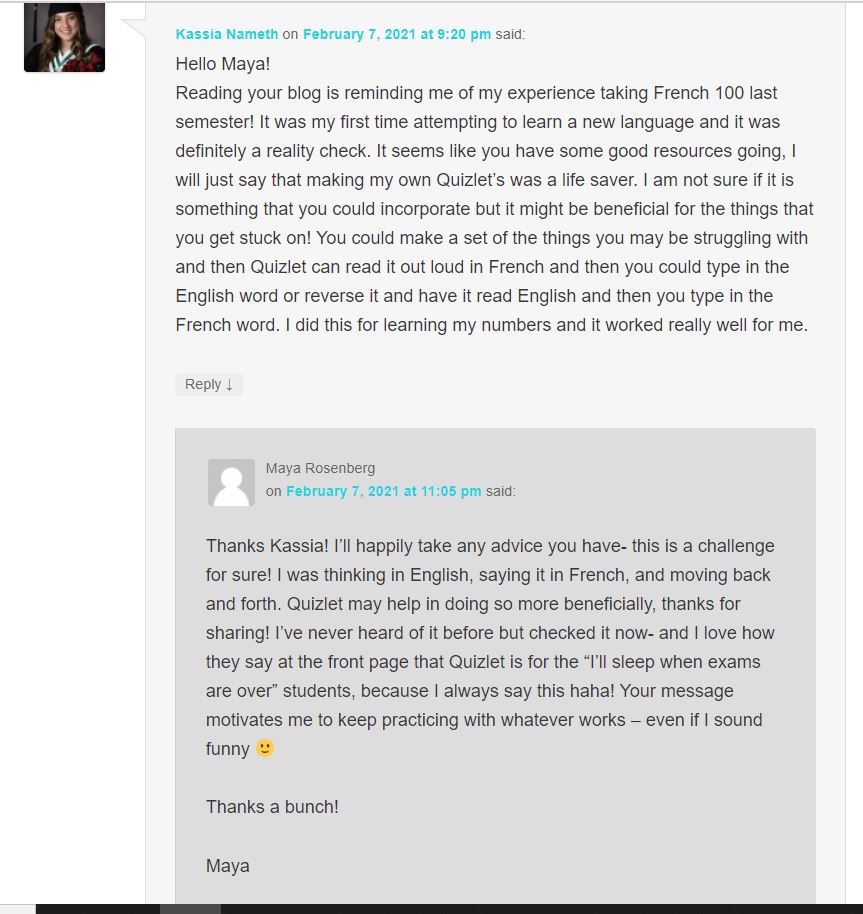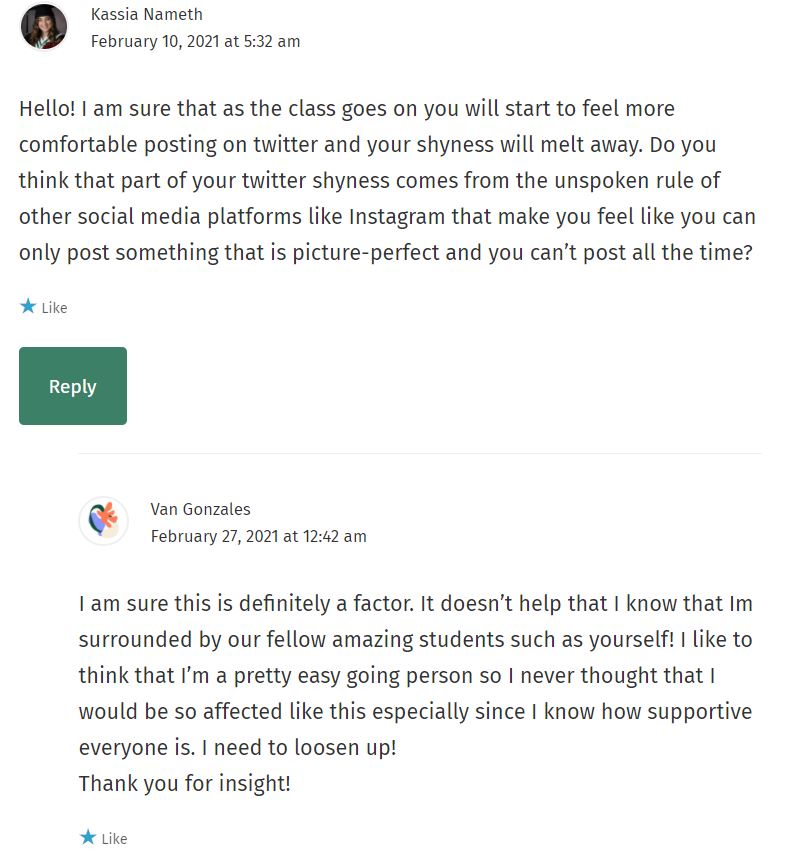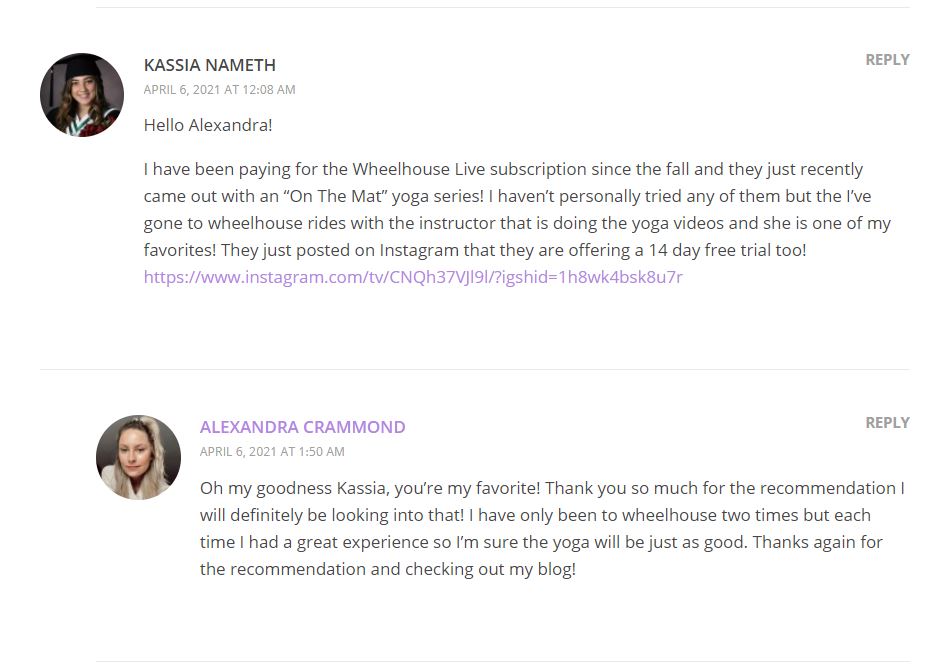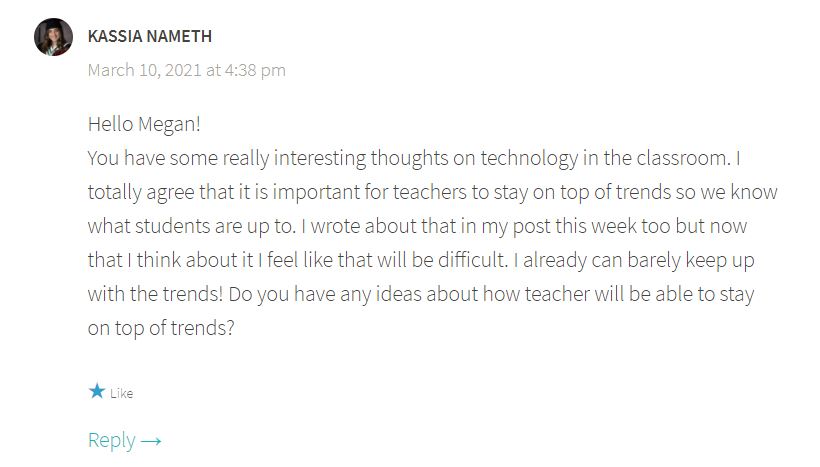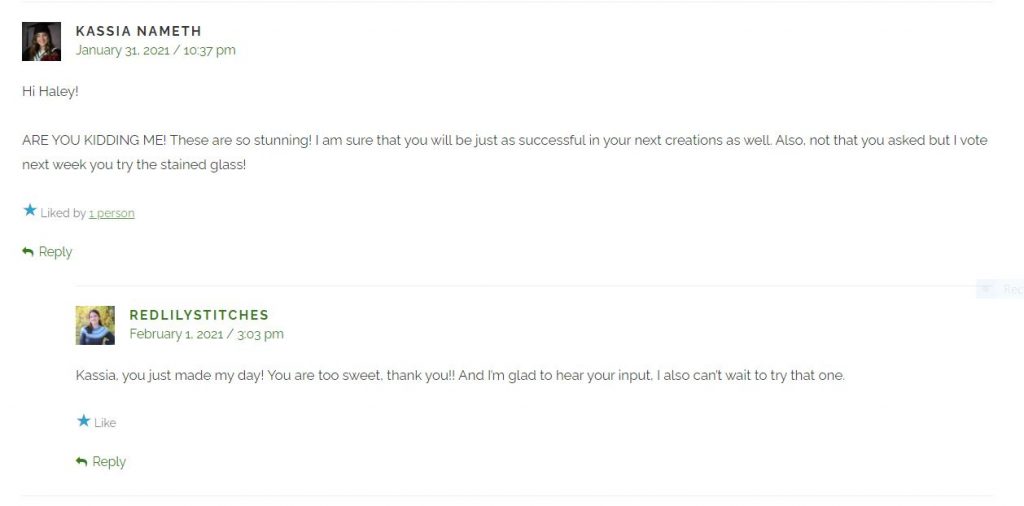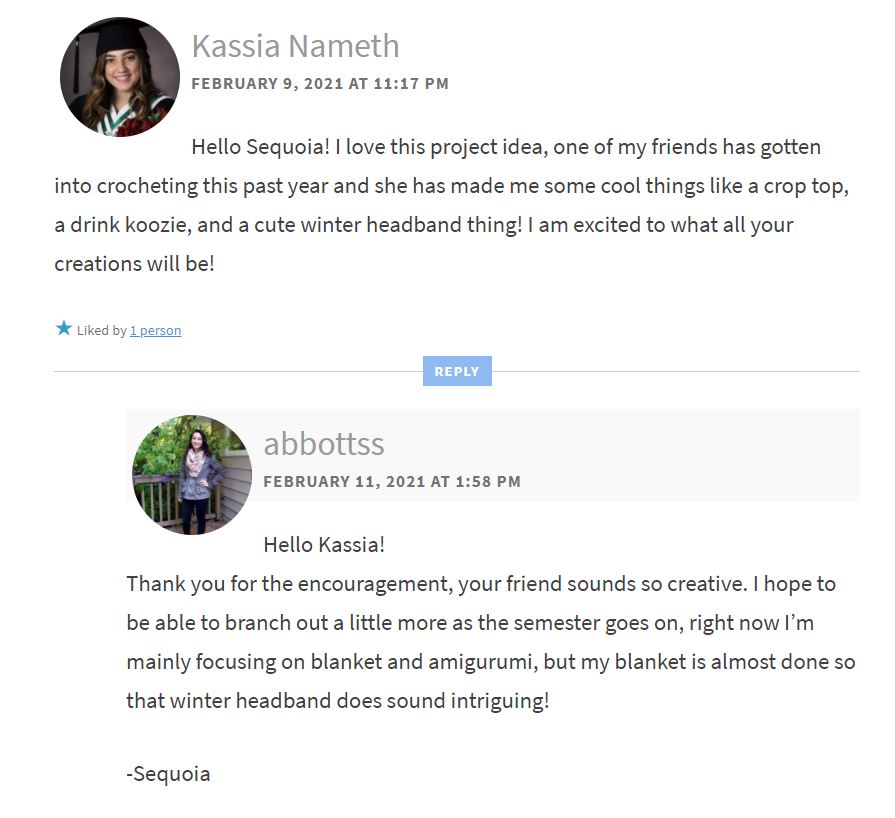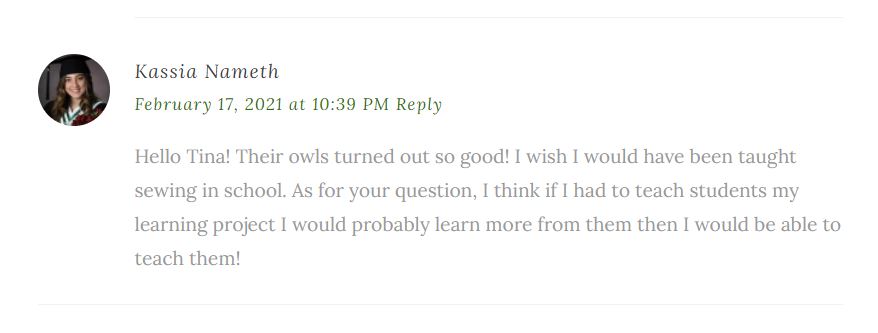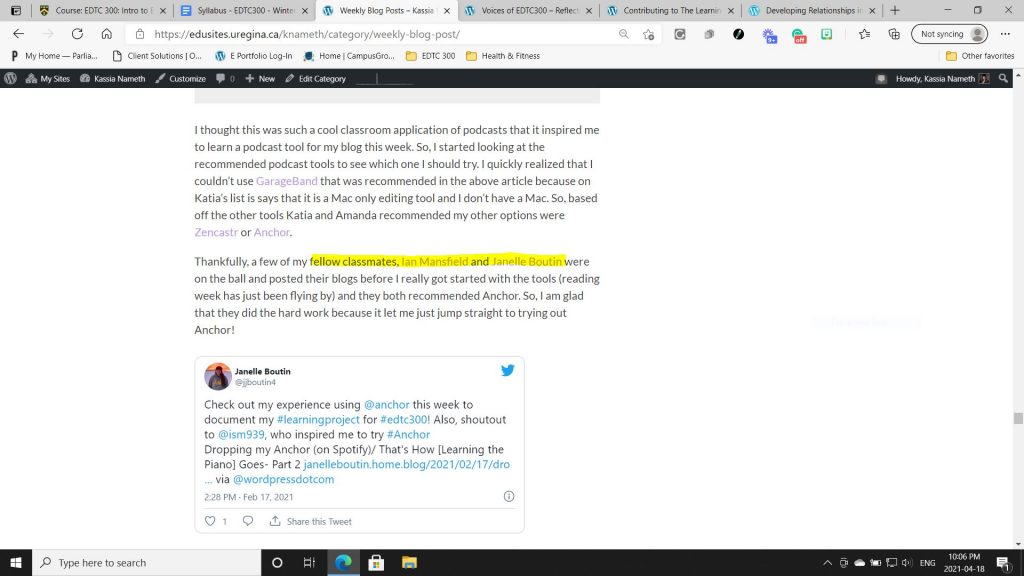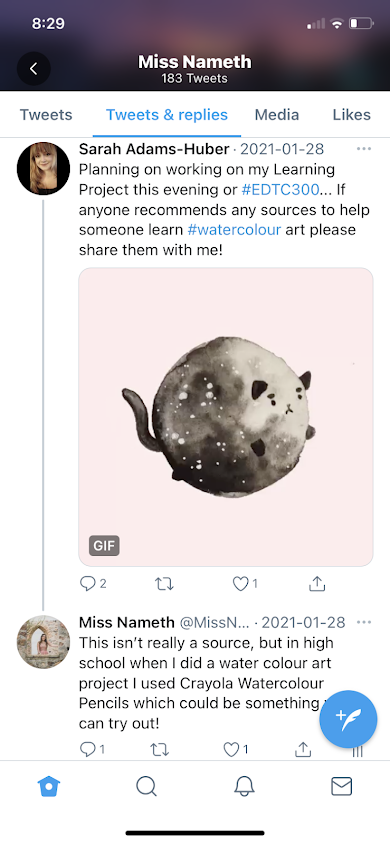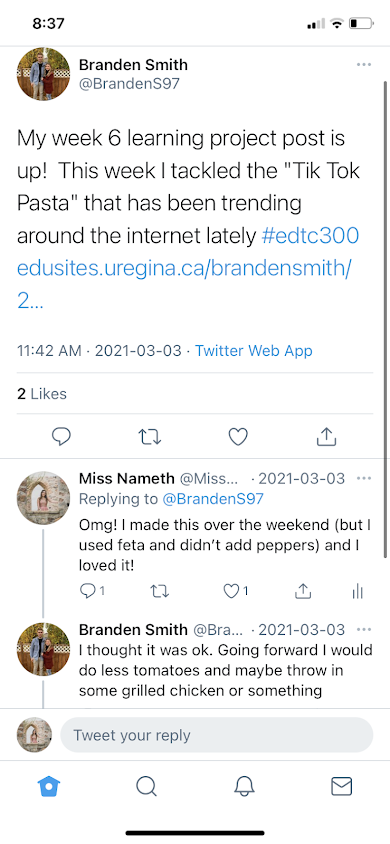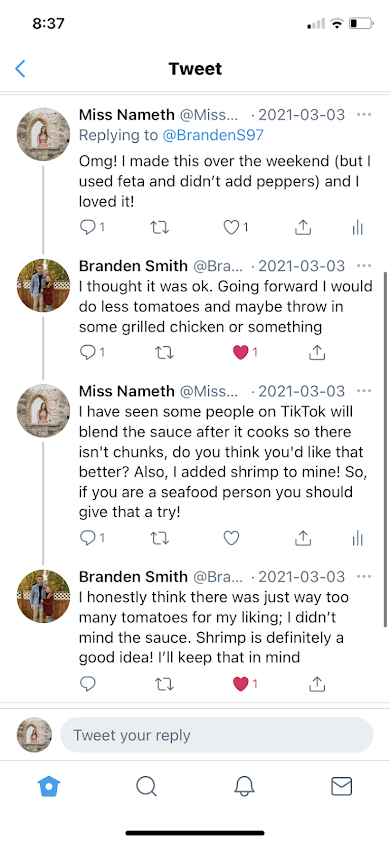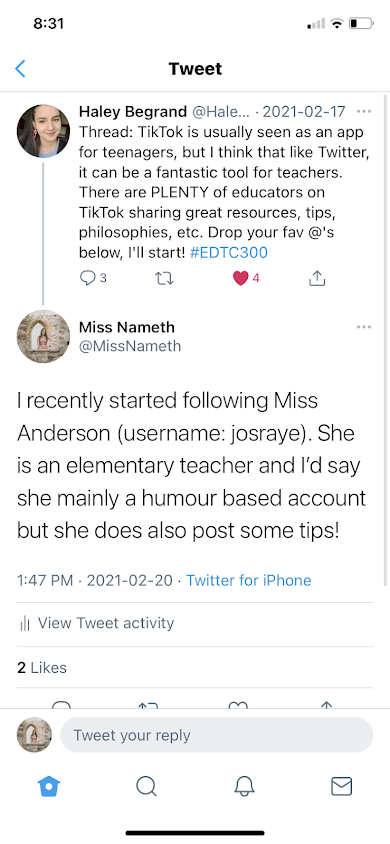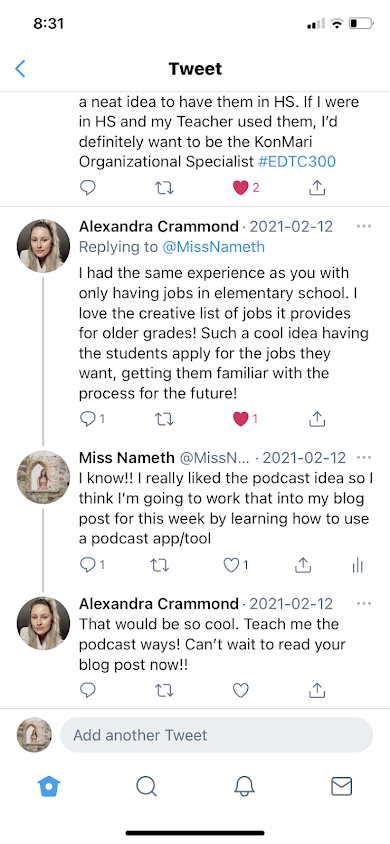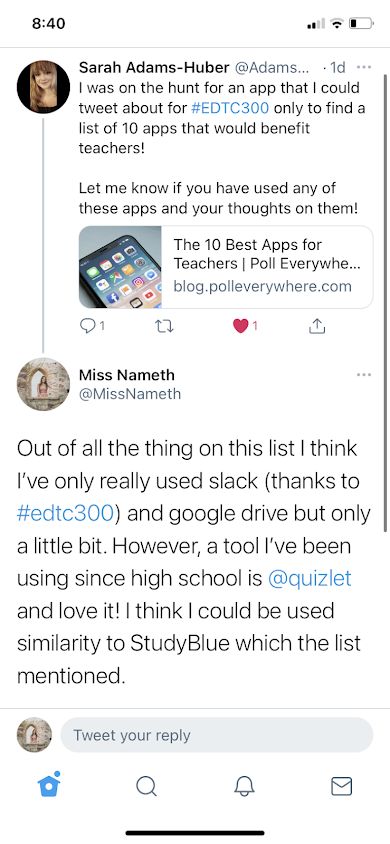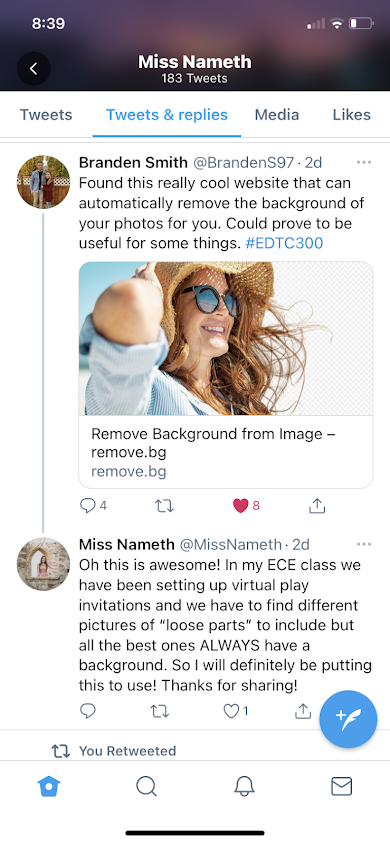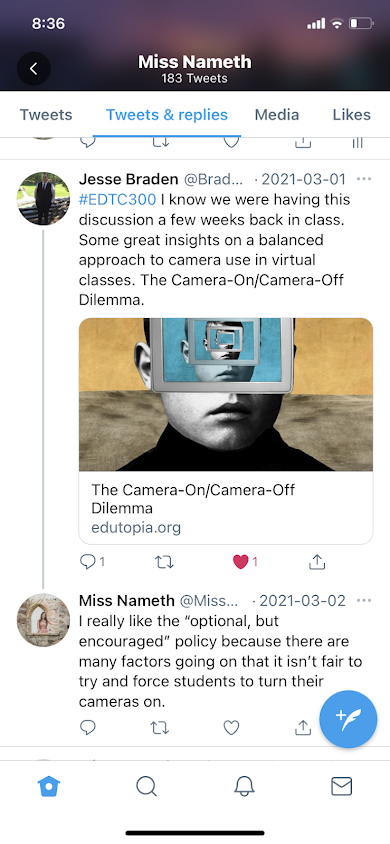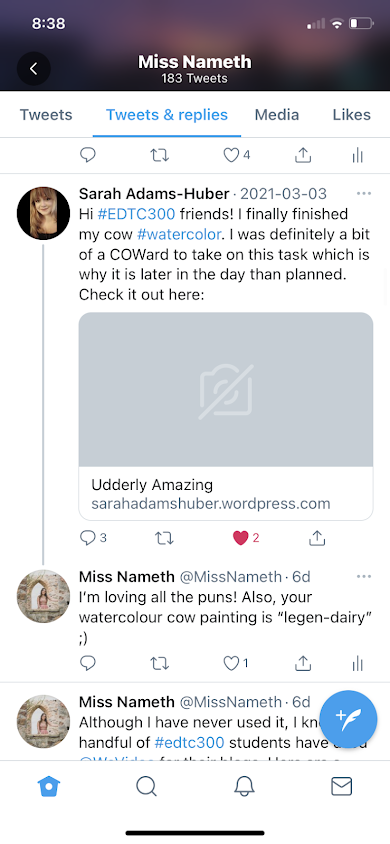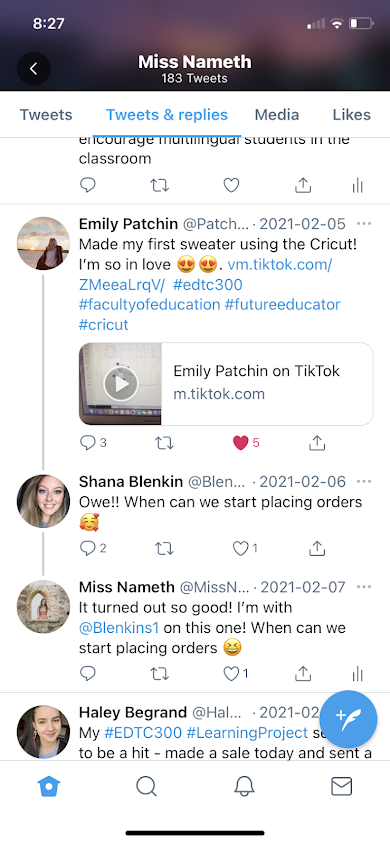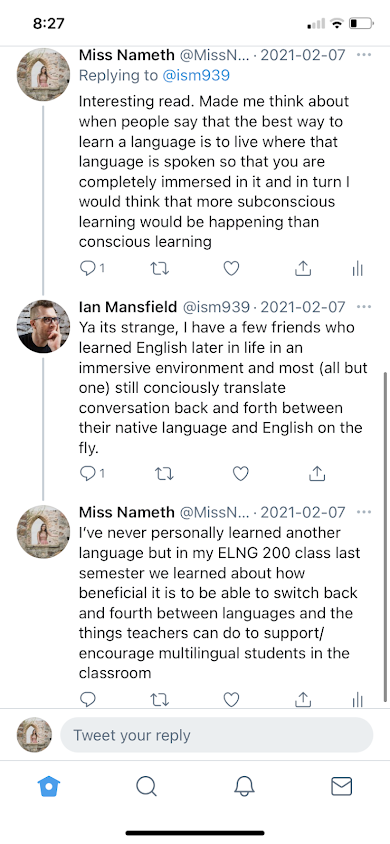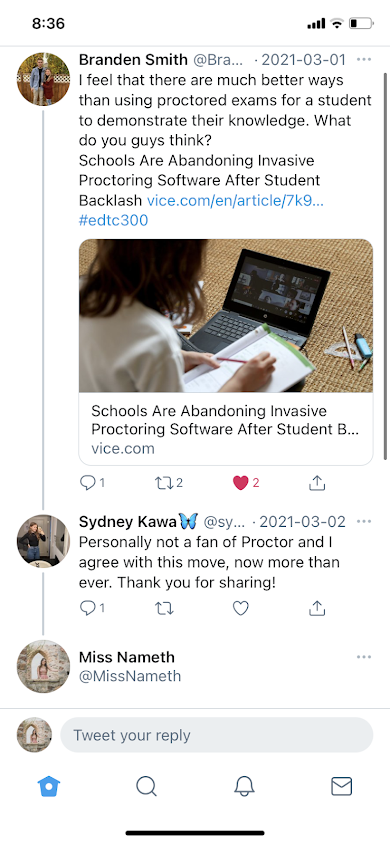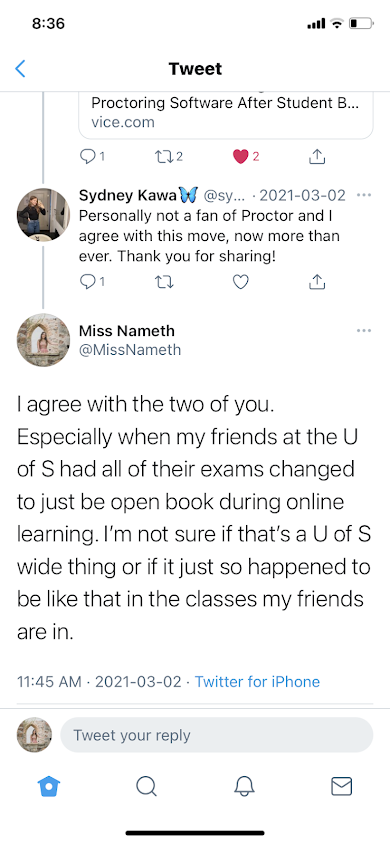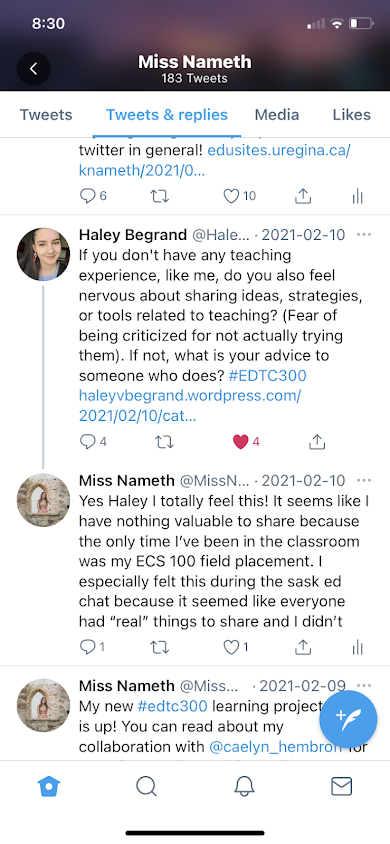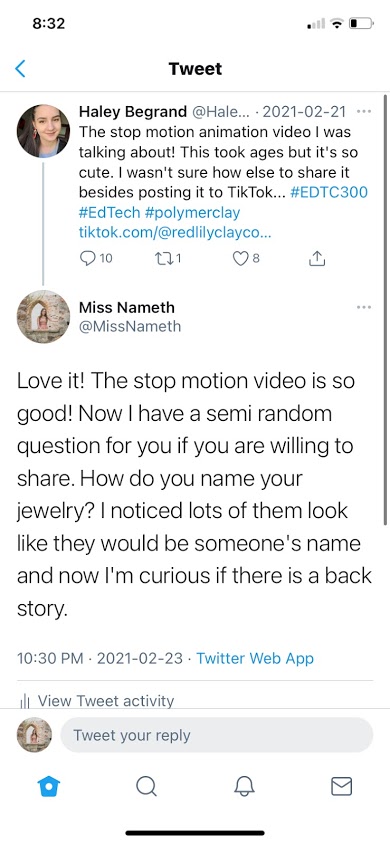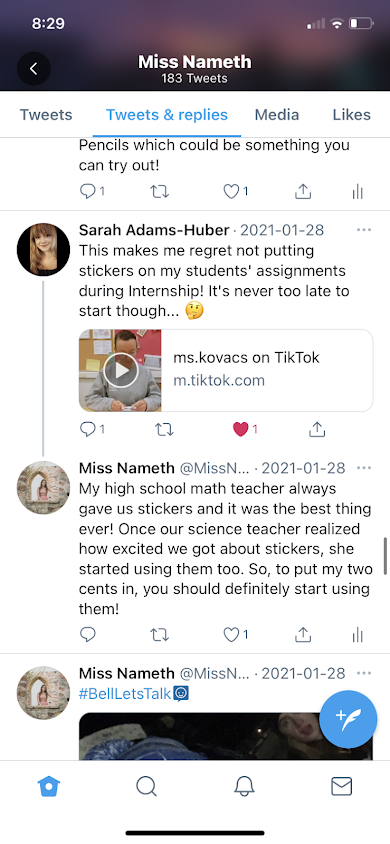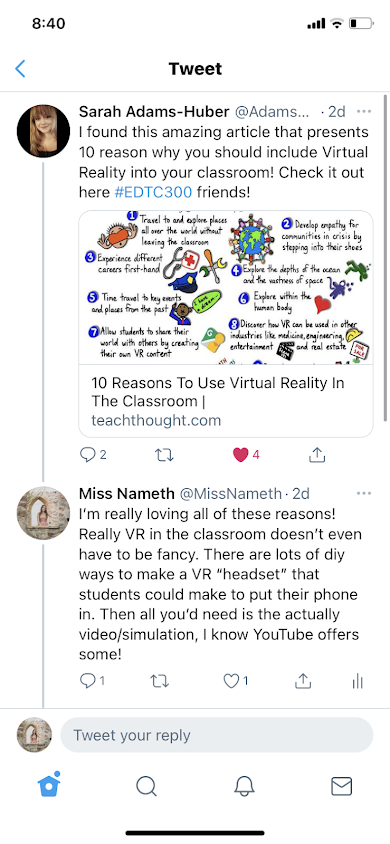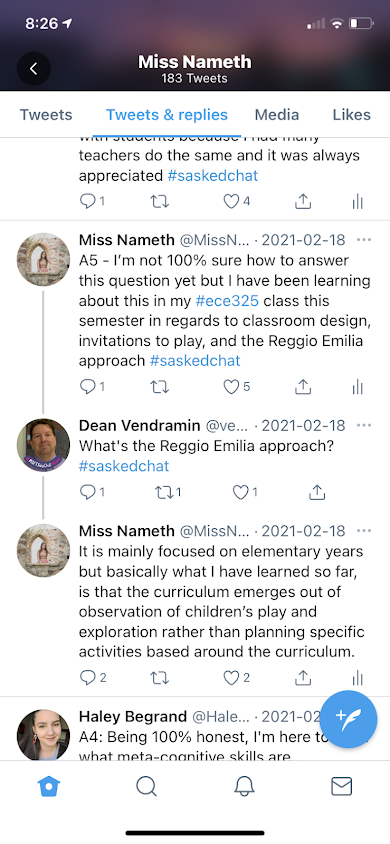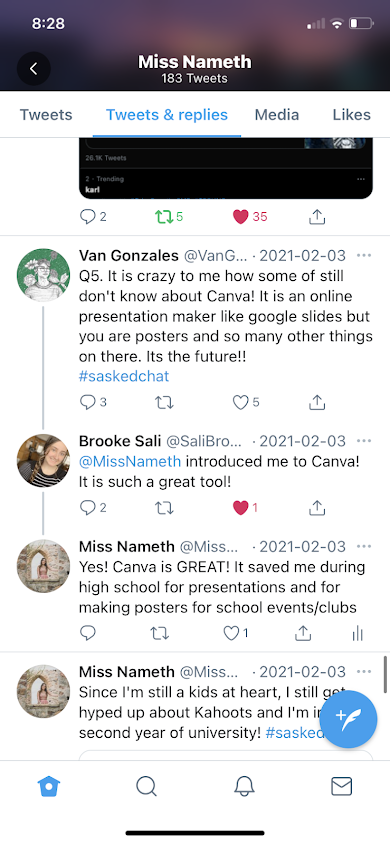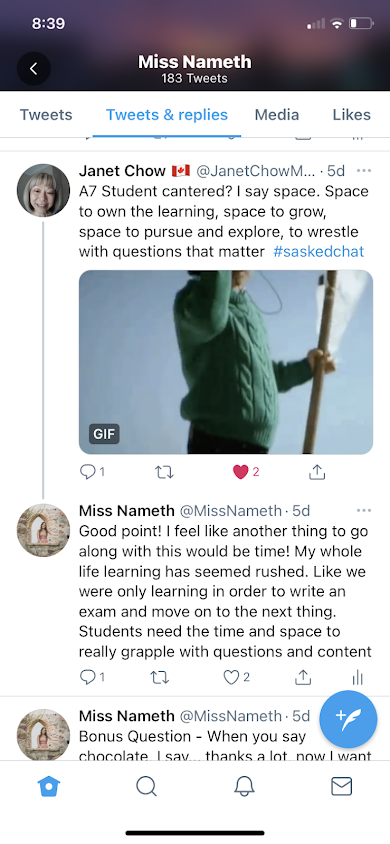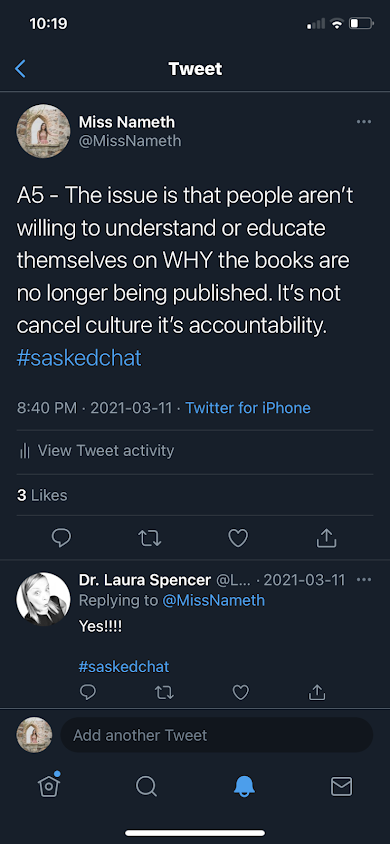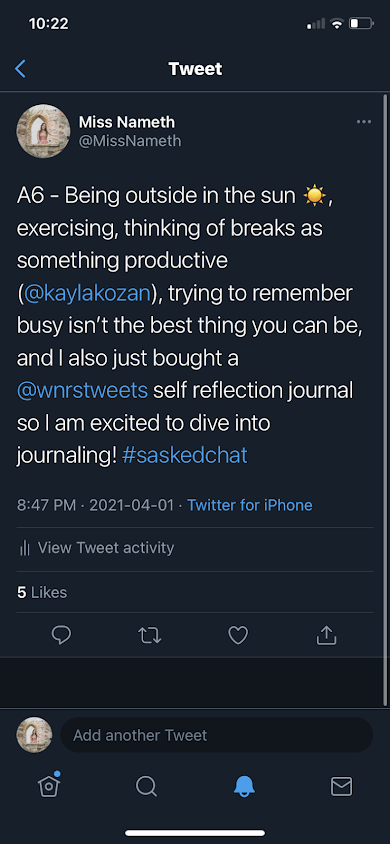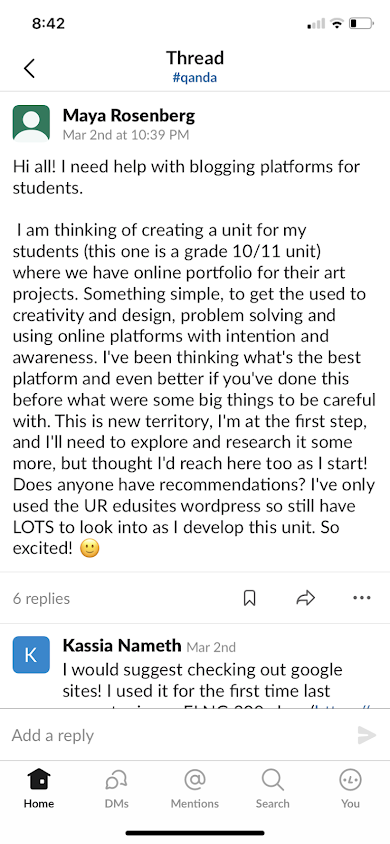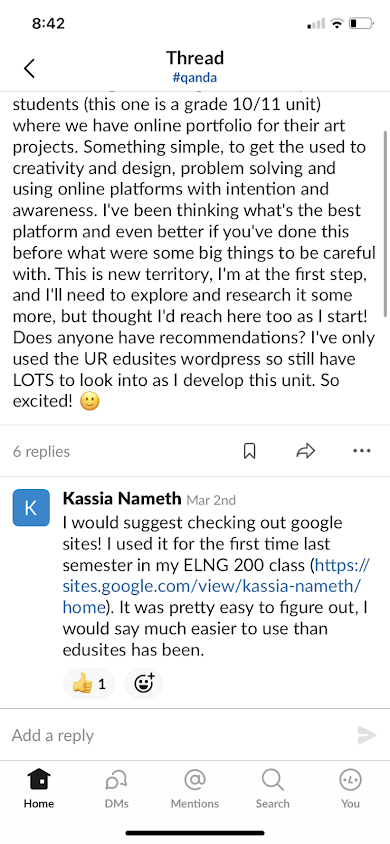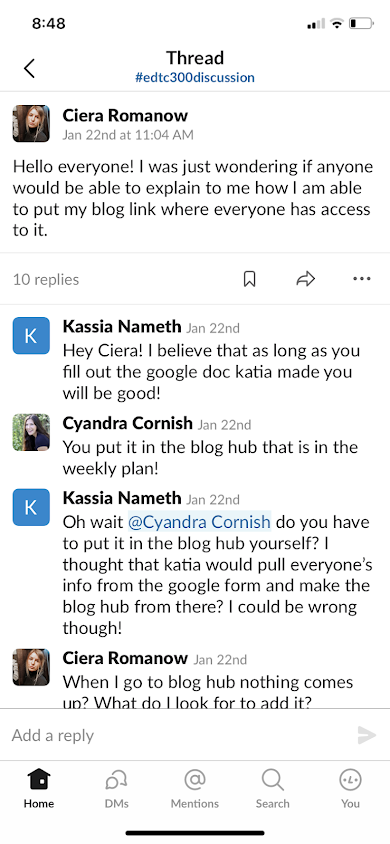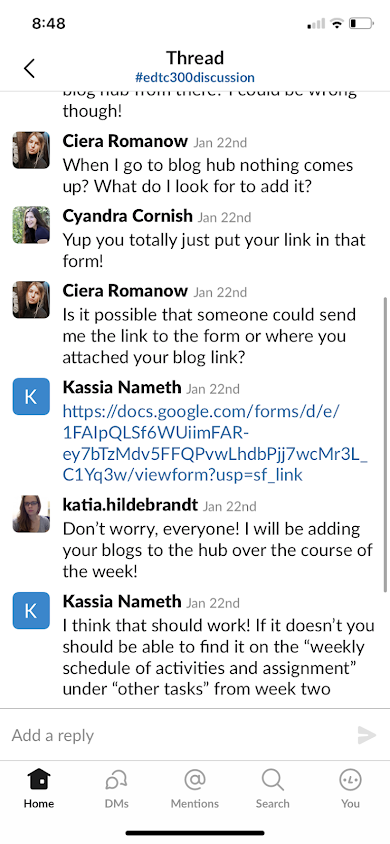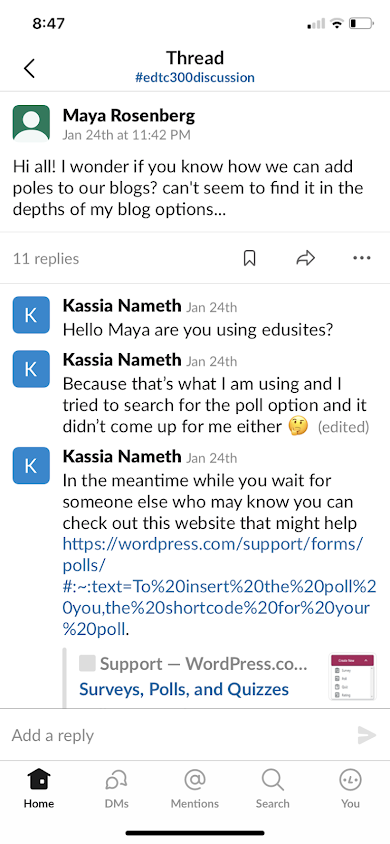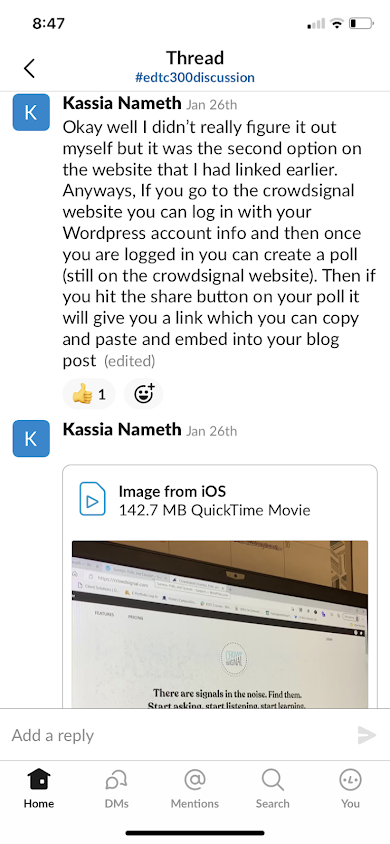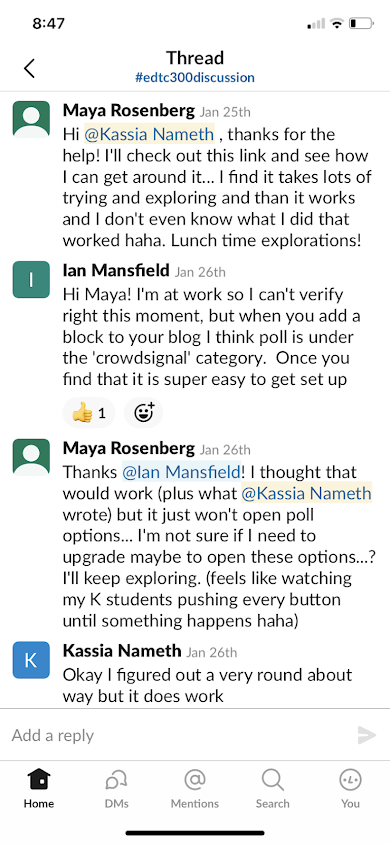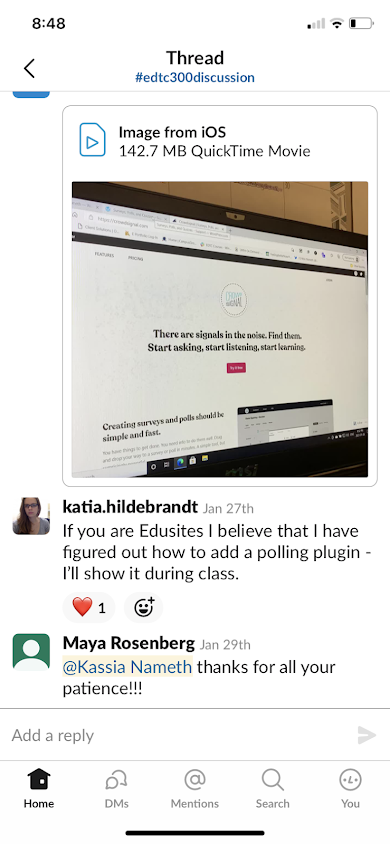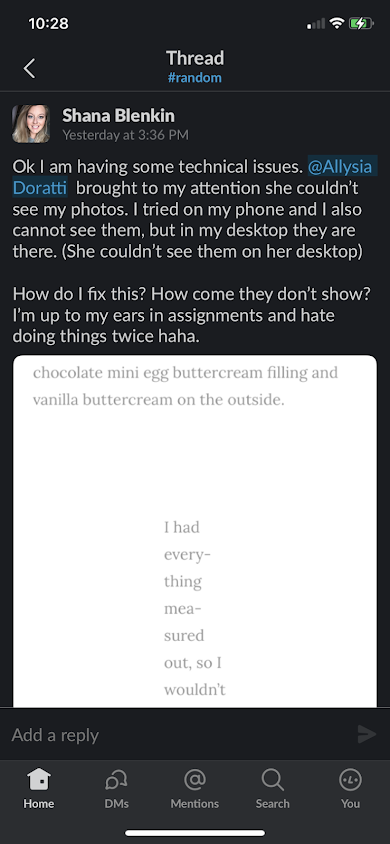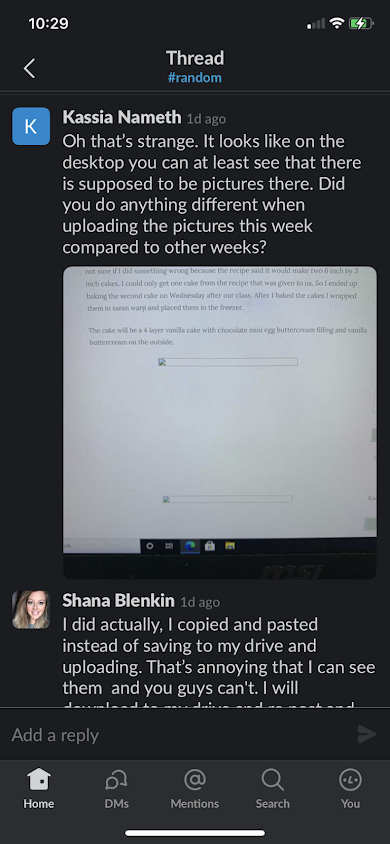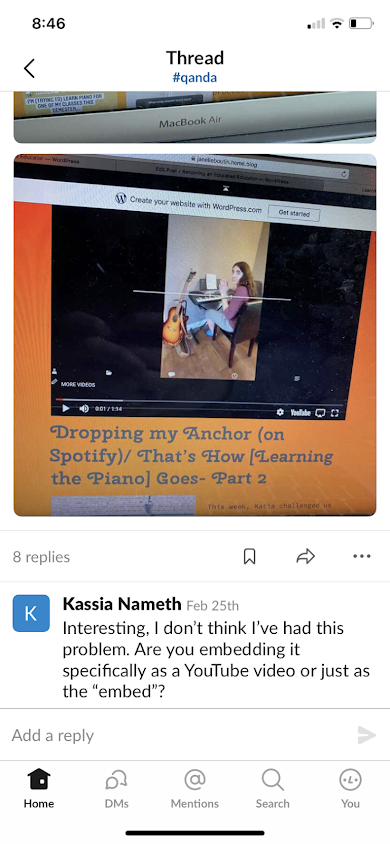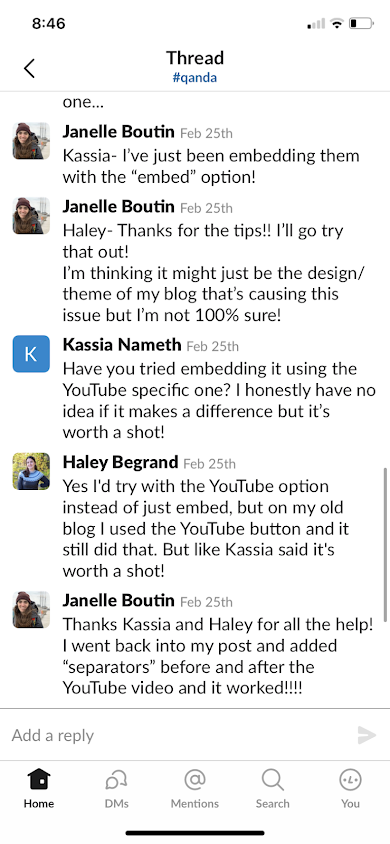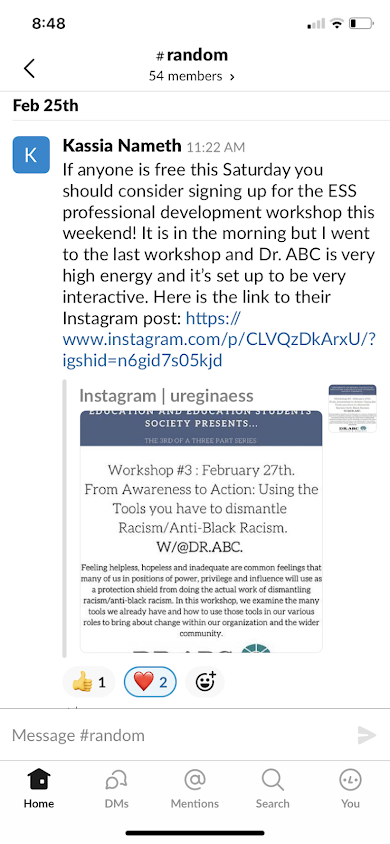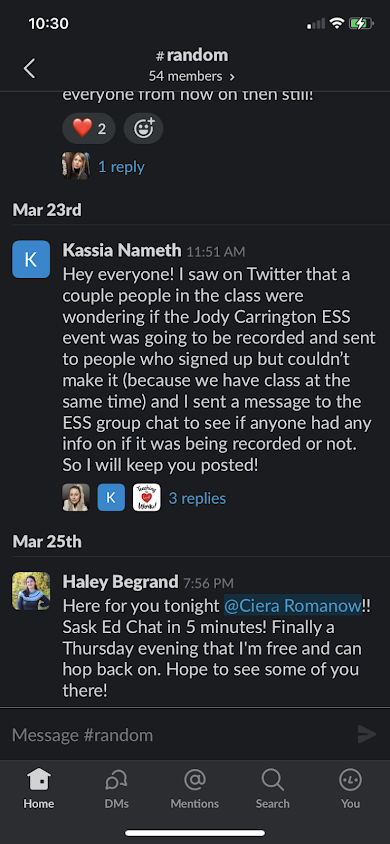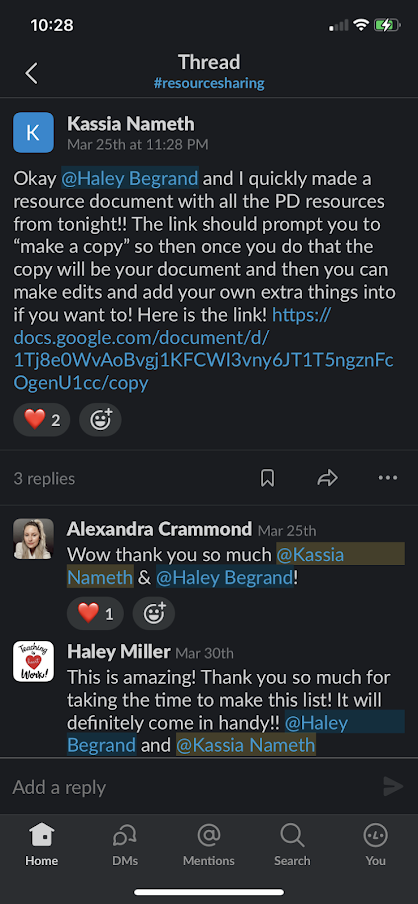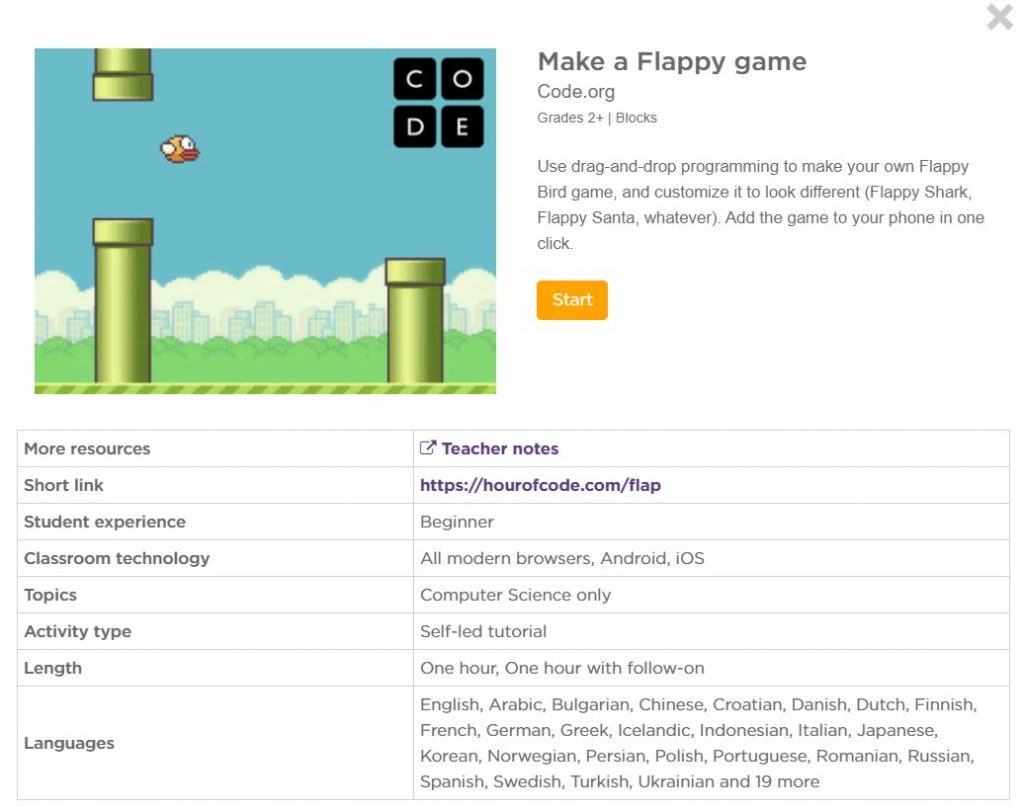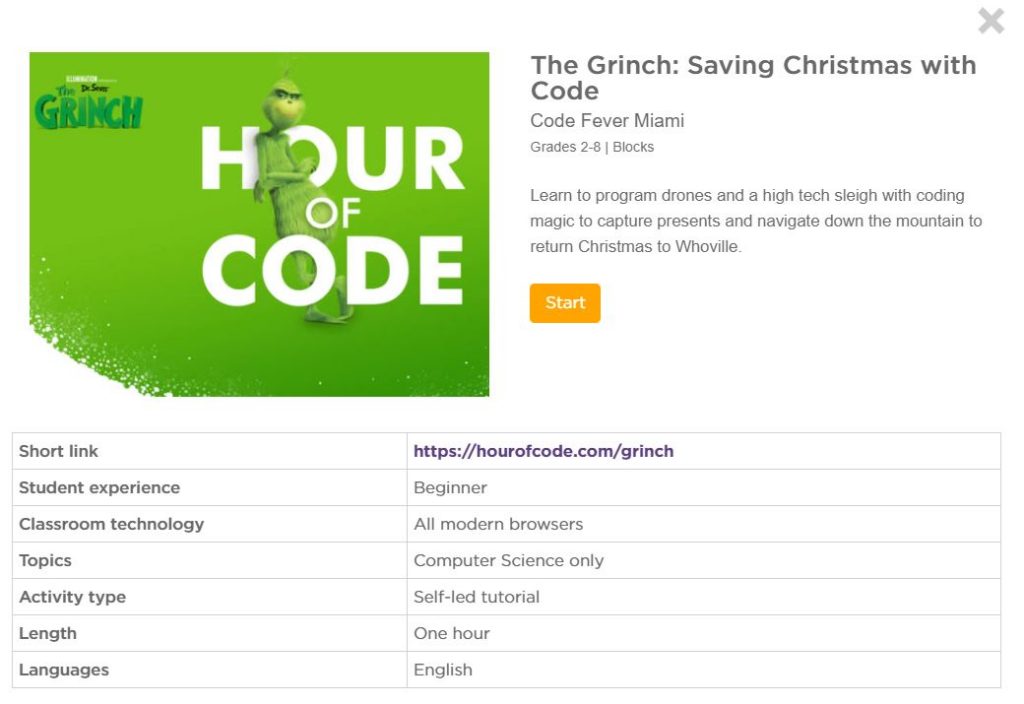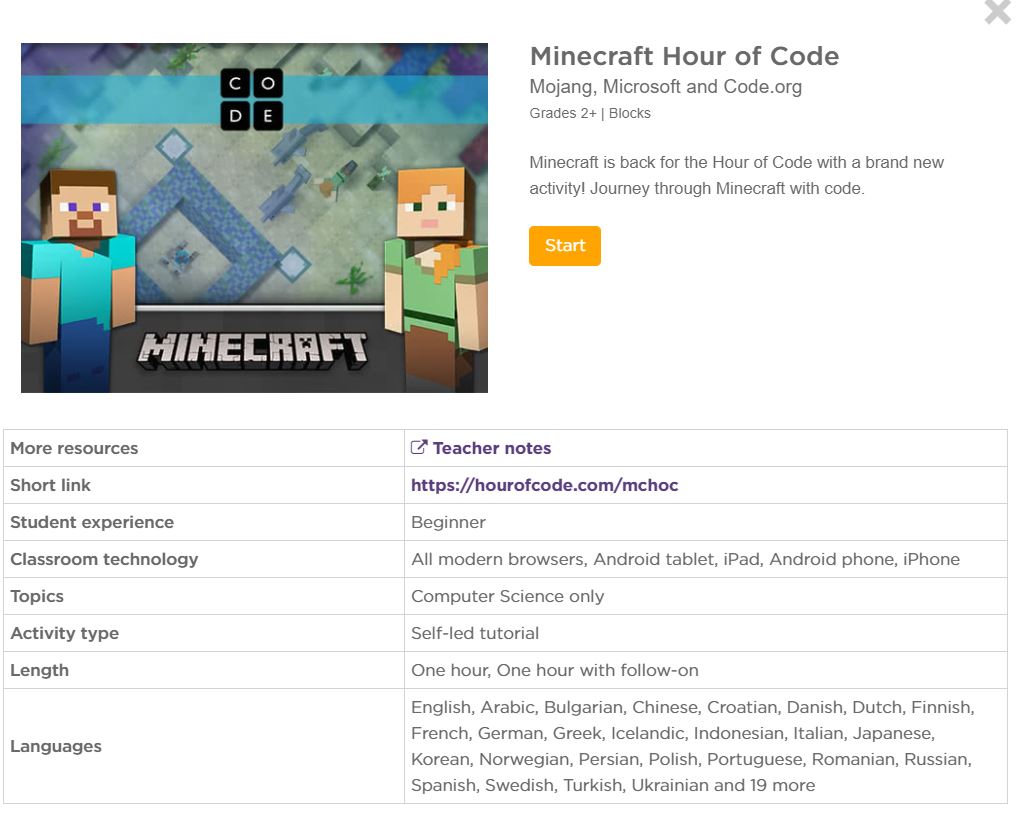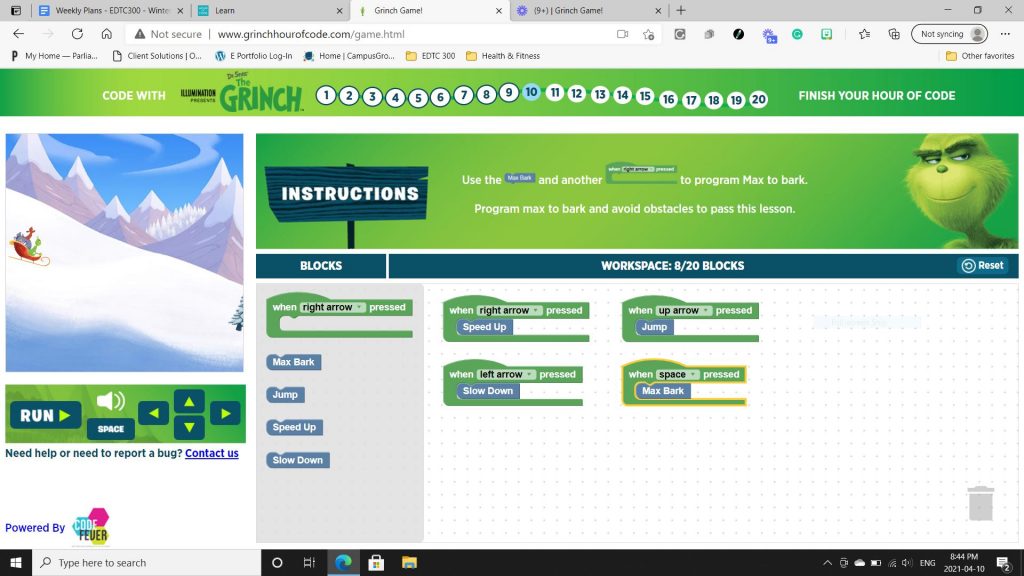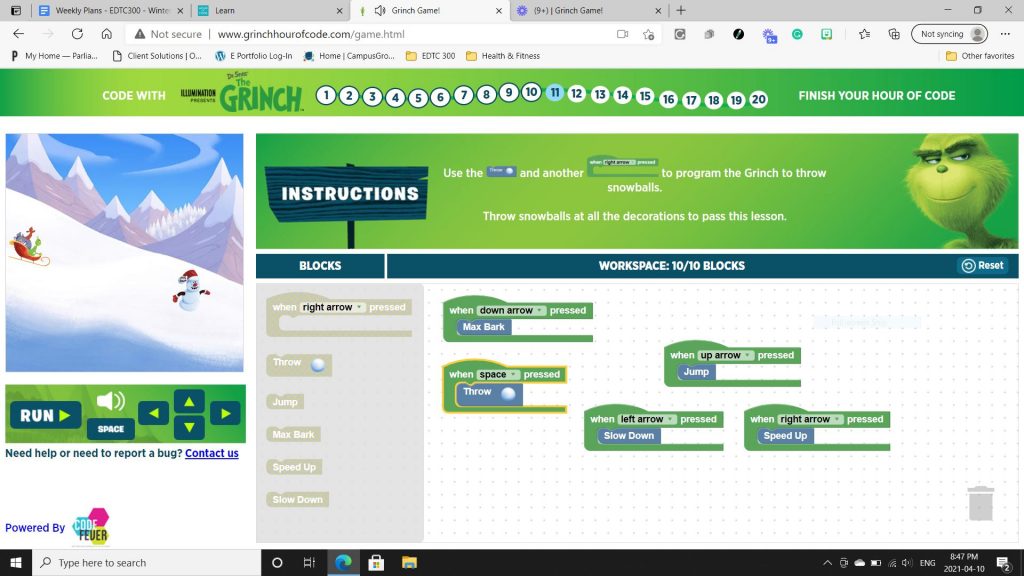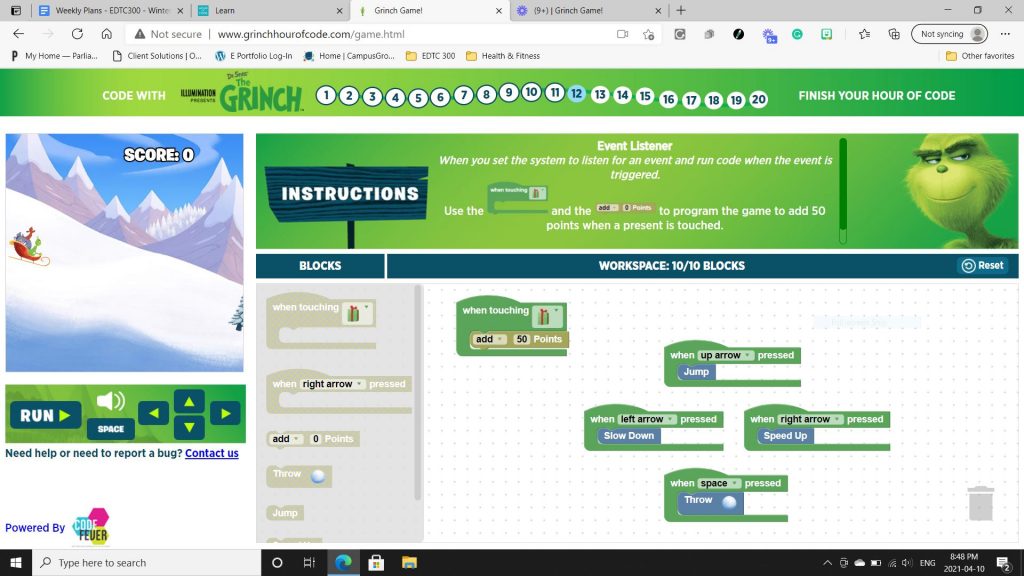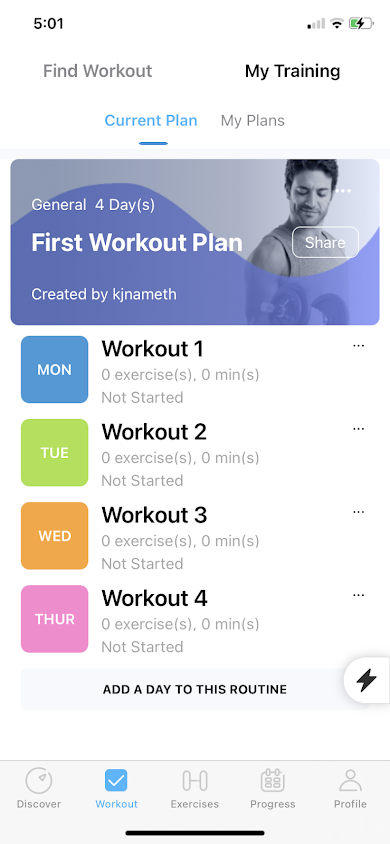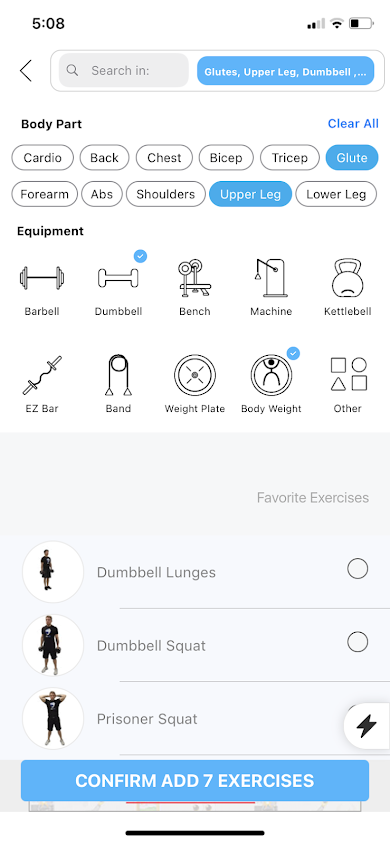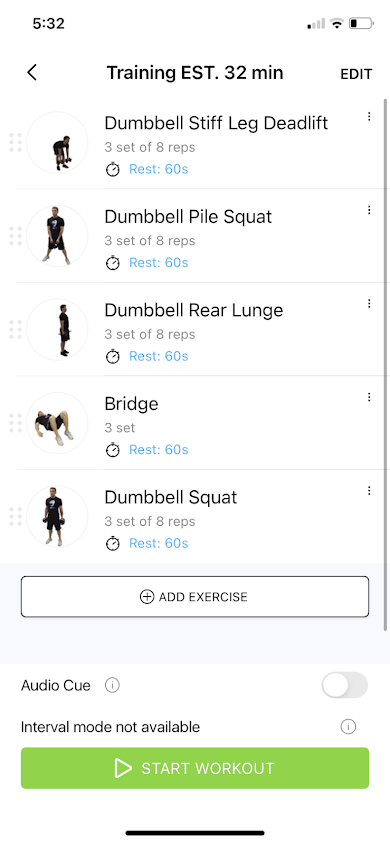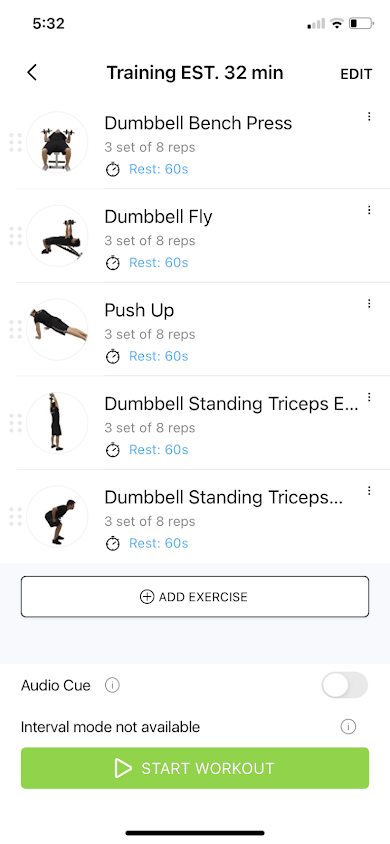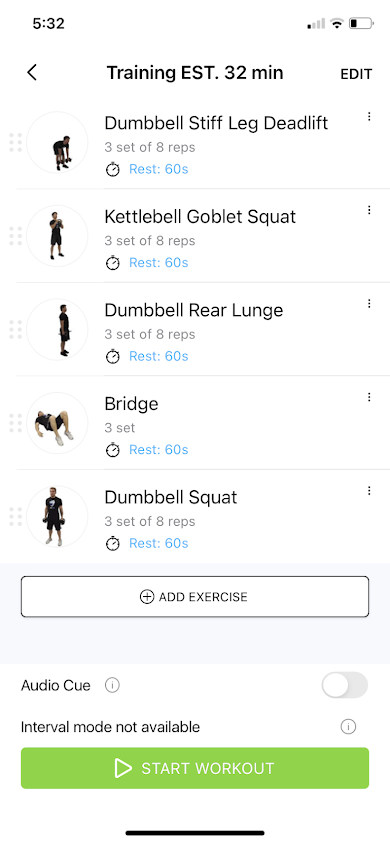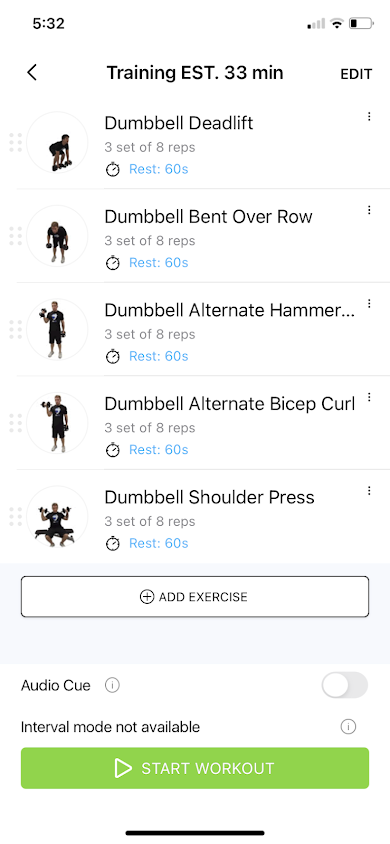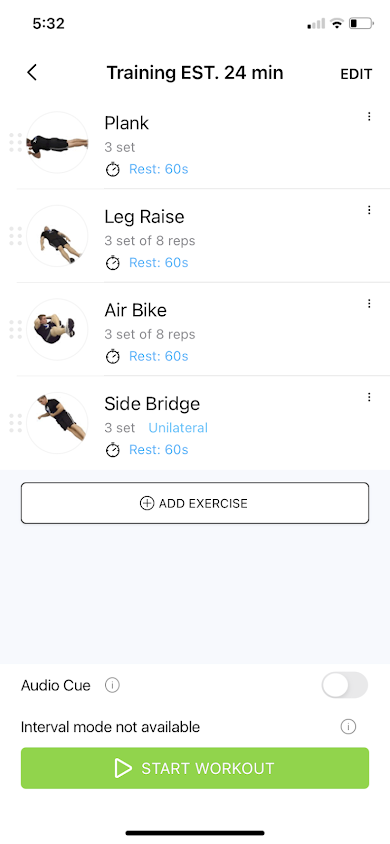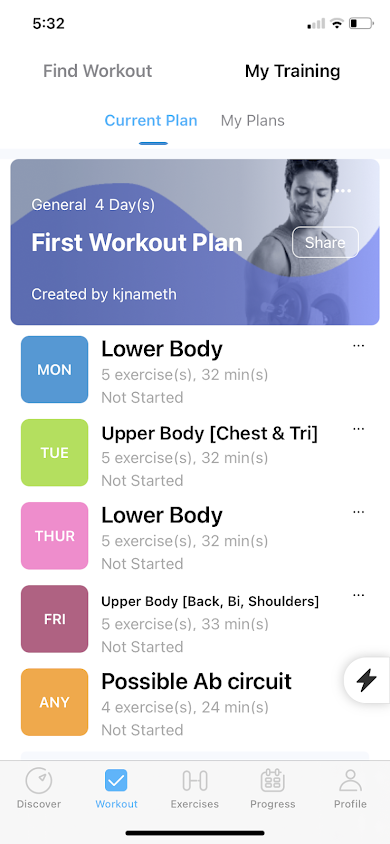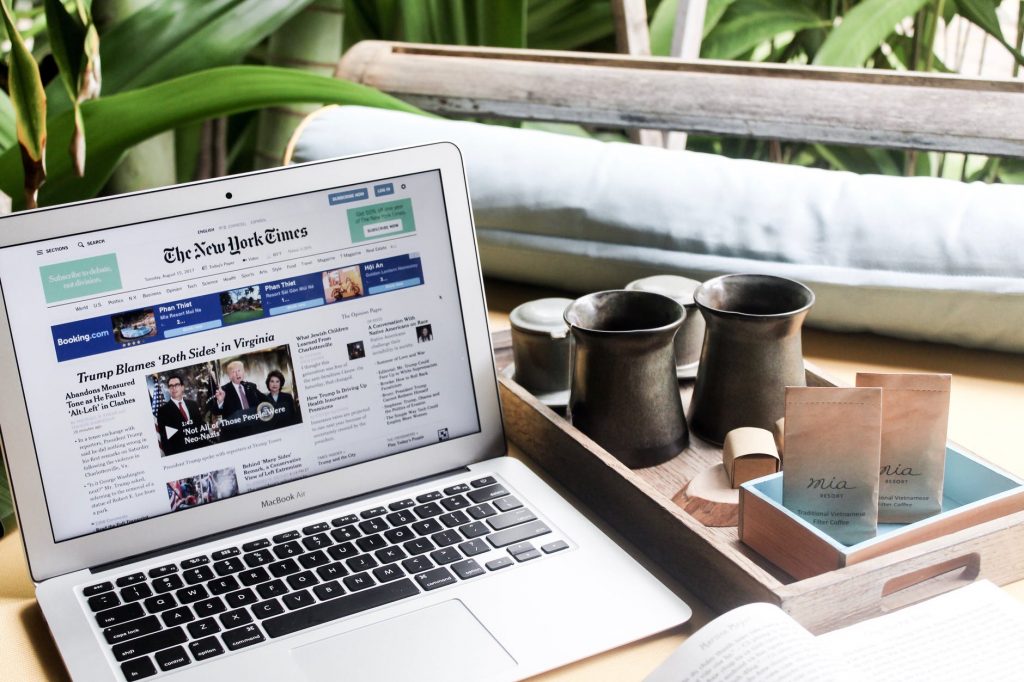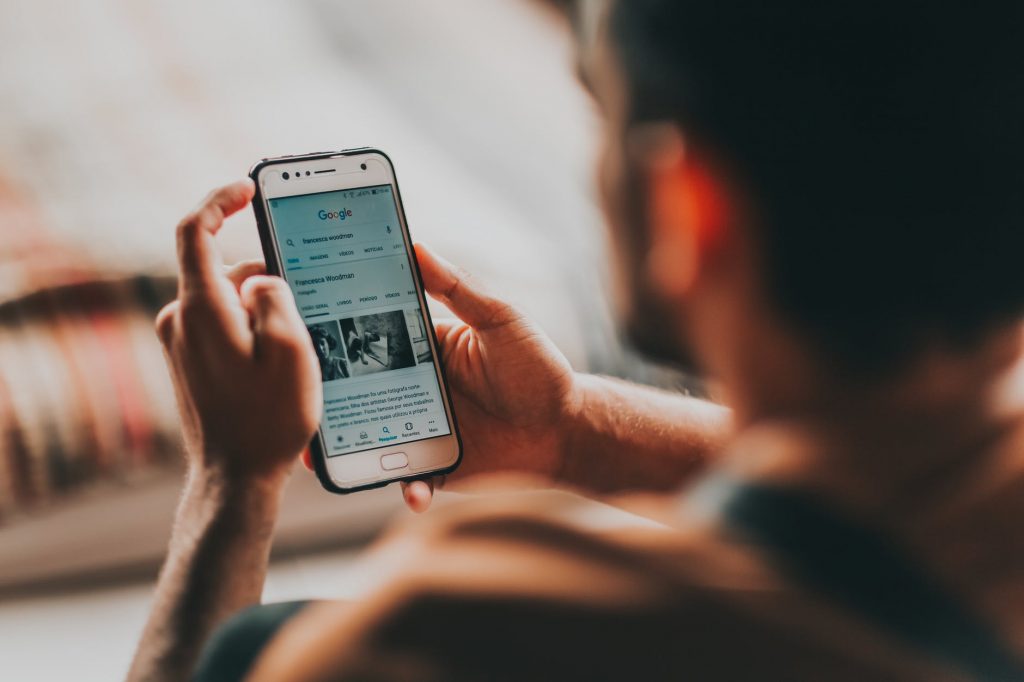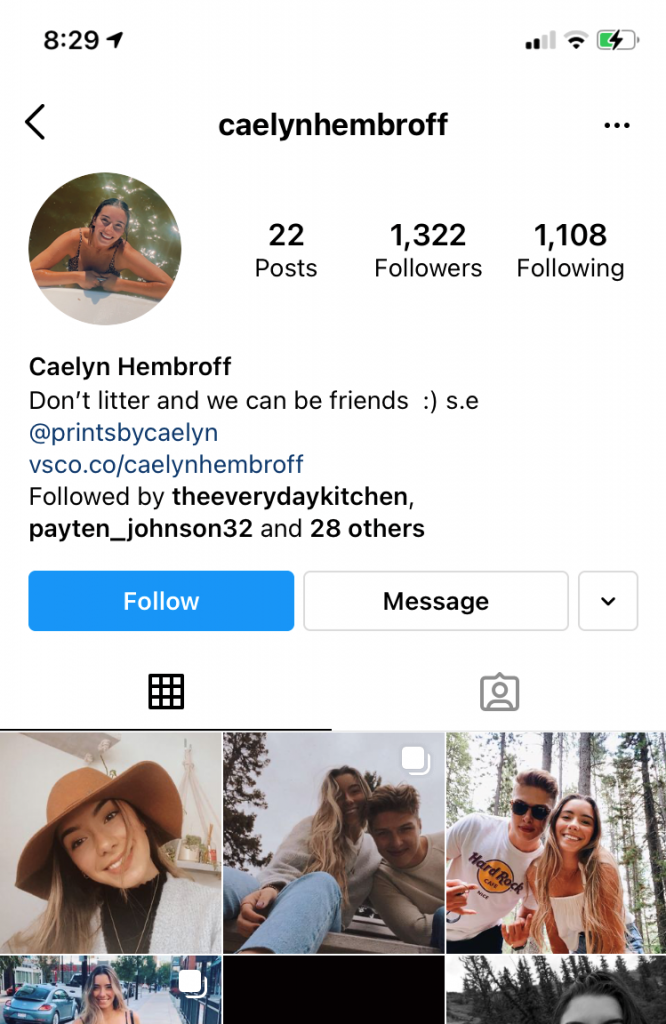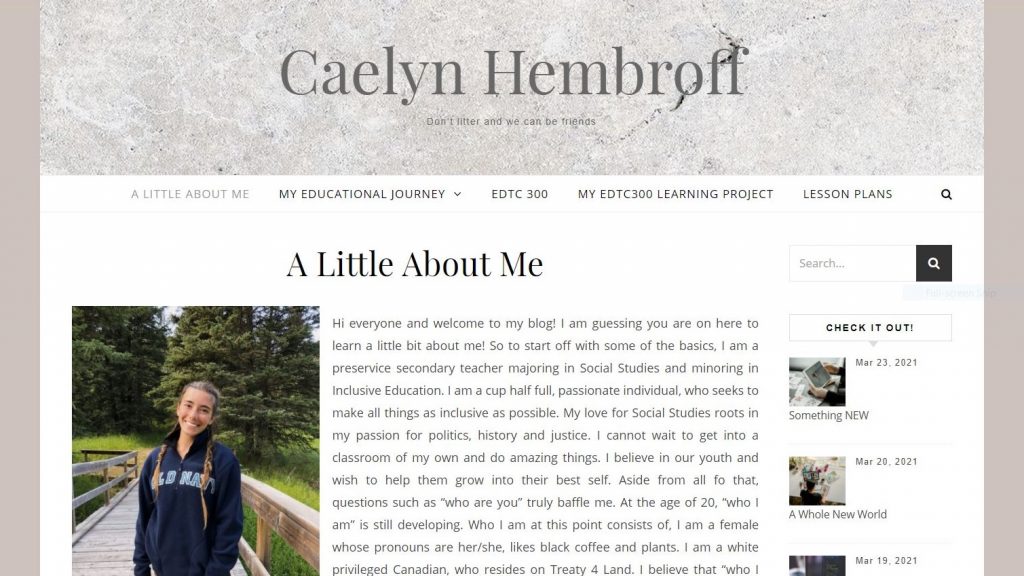Category: EDTC 300 (Page 1 of 3)
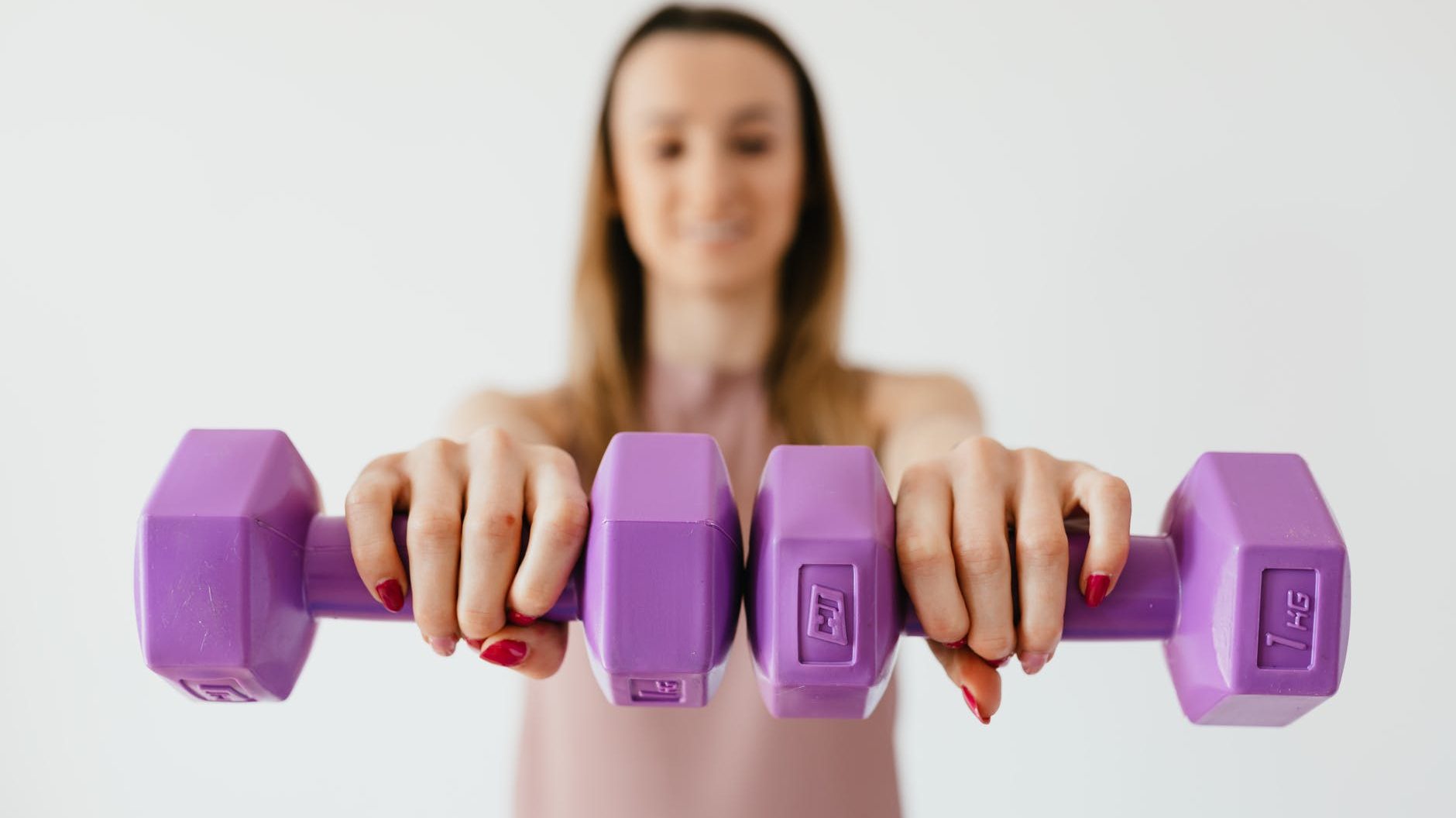
Overview of My Journey:
Week One: Operation Strength Training
- My inspiration for this project mainly stemmed from the fact that I was on fitness TikTok and because you know “new year, new me” and I wanted to do better at being consistently active.
- So, I set myself a 5 step plan that seemed easy enough.
- I also started looking into various YouTube accounts and apps that could help me throughout my process
- Thankfully, I got a bunch of lovely suggestions from my peers on a whole bunch of different online resources to try
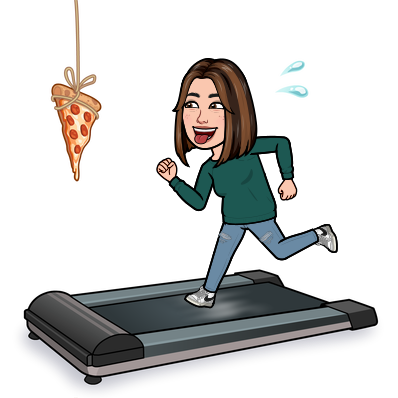
Week Two: First Day (Workout) Jitters
Online Sources Used: Strength Training For Beginners: The 5 Best Exercises (aaptiv.com), TikTok (to make my video)
- This week I used a website to learn some basic information about strength training (reps, sets, rest) and also 5 basic strength training movements
- Then, I followed a workout using those basic strength training exercises
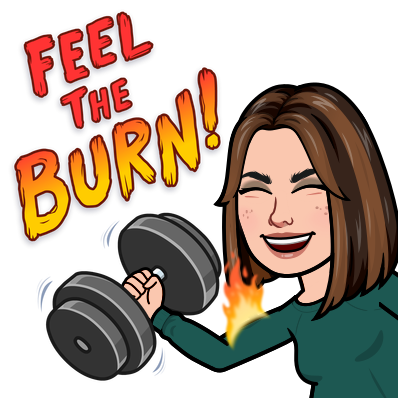
Week Three: Perks of Virtual Workouts
Online Sources Used: Zoom, Local Barre Digital Subscription, an #edtc300 friend, Fitbit App, and Wheelhouse Live
- This week was very exciting because I did an online workout over zoom with Caelyn Hembroff! I had never done barre and although it isn’t strength training specific I did notice some overlap in moves, especially the squats!
- Then, I tried an upper-body workout from the Fitbit app. It was a good workout, however, I didn’t enjoy having to follow it off of my tiny phone screen. I like the bigger screen of my laptop
- Lastly, I did a Wheelhouse “Off the bike” workout video. I liked this video because it was fairly beginner and incorporated all 5 of the exercises I learned in week 2, PLUS some new ones, and of course also some cardio.
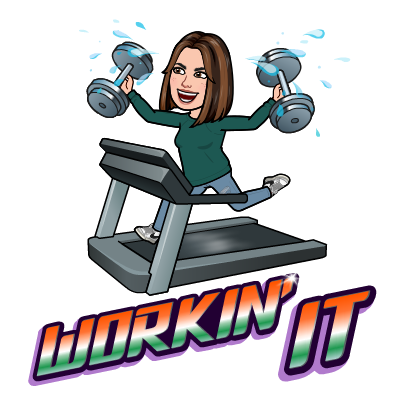
Week Four: Operation Strength Training: Podcast Edition
Online Source Used: Anchor
- This was the week I made it to step two because I went to my apartment gym! I didn’t use any online workout source this week, I just sort did the workout from week two and then played around with some of the machines to try and figure them out!
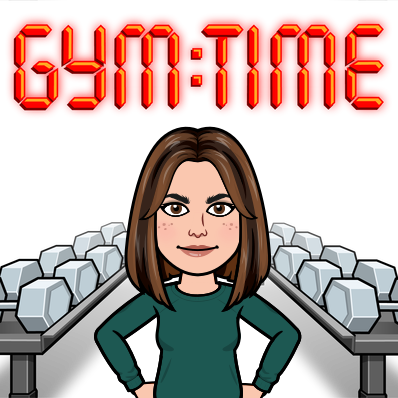
Week Five: Classmate Recommendations For The Win
Online Sources Used: MadFit YouTube channel, Nike Training Club App, and InShot (to make my video)
- I really enjoyed the MadFit Youtube channel! I did a quick upper body workout and a dance workout which was super fun. It was interesting having strength training moves like squats thrown in with dance moves but oddly enough it worked!
- With the Nike Training Club, I did three different workouts and I really liked all of them! The app was really easy to set up and use. I just did basic strength training moves again – it sounds boring but repetition is sort of a key aspect in strength training! However, once again I just didn’t like using a small screen to follow the workout.
- I used a new video-making app for this week which I actually really enjoyed using! I found it easier and more user-friendly than iMovie (not that iMovie is overly difficult to use). The only downside is that you can only make one video without a watermark and then all the rest have watermarks.
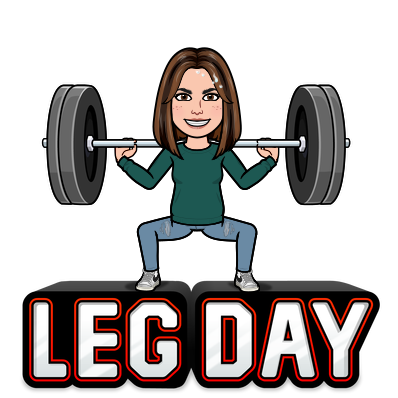
Week Six: A Little #edtc400 Guidance and a Dash of Lockdown One Nostalgia
Online Sources Used: YouTube channel HASfit, Chloe Ting YouTube channel, Animoto (to make my video)
- The Hasfit YouTube channel is a strength training-specific channel which I really liked! It was also a bonus that the video had two people: one doing the normal exercise and the other doing a modified version! Since my arms are much weaker than the rest of my body I found myself doing modified moves for arm workouts but I could keep up well it the other aspects!
- The Cloe Ting workout was short and sweet but also extremely difficult because I hadn’t done any ab specific workout yet in this journey since most strength training workouts already work the abs.
- I also tried Animoto for the time to make my videos for the week and it was very fun and easy to use!
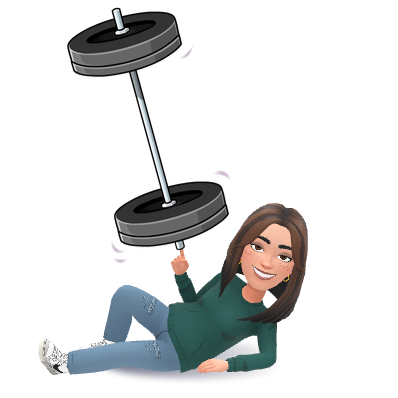
Week Seven: Classmate Recommendations For The Win [Part 2]
Online Sources Used: Sydney Cummings YouTube channel, URFIT On Demand, Animoto (to make my video), and InShot (to make my video).
- Sydney Cummings has a strength training-specific series on her channel and I picked a video right in the middle of the series for some reason (you know why would I start at the begging like a normal person). This was the longest video I did but it went very well and I really liked it! Sydney definitely gives personal trainer vibes which is great for motivation.
- The workout I did from the URFIT channel was a recorded video of a live workout class which was strangely enjoyable! It almost felt like I was also there because the instructor has reference to correct form or adjust time since there were actual people there when it was being filmed.
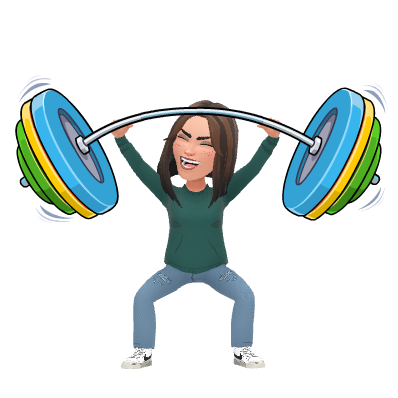
Week Eight: Stumbled My Way Back on Fitness TikTok
Online Sources Used: Caroline Girvan YouTube Channel and InShot (to make my video).
- This YouTube channel was recommended on TikTok so I had to try it out! This channel also had a strength training-specific program which was nice. The video I did I found to be very fast-paced, especially when I was trying to figure out new exercises and have the correct form. By the time I would have the exercise figured out it would be switching to a new one.
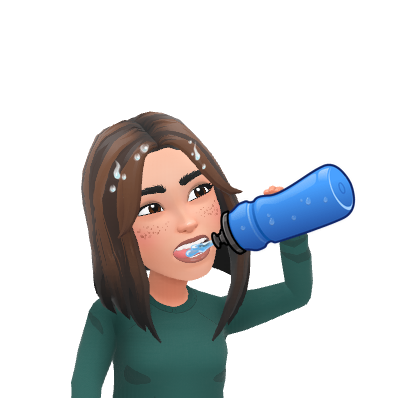
Week Nine: Back To Basics, Should Be Easy Right?
Online Sources Used: Shelley Darlington “How to start weight training for women,” Jetfit, Windows video editor (to make my video).
- By this point, I had been exposed to many different exercises and combinations of exercises
- So, this week I had focused on learning how to actually structure a workout, for the week and long term. I learned this from Shelley’s video but after watching it I was still slightly confused
- Luckily, I had the Jetfit app suggested to me! This app was my saving grace because of how easily it lets you structure your workouts and then when you are actually doing the workout it gives you audio cues to keep you on track
- I did have some technical difficulties this week which led me to use my laptop webcam and the windows video editor in order to make my video. But hey it worked just fine!
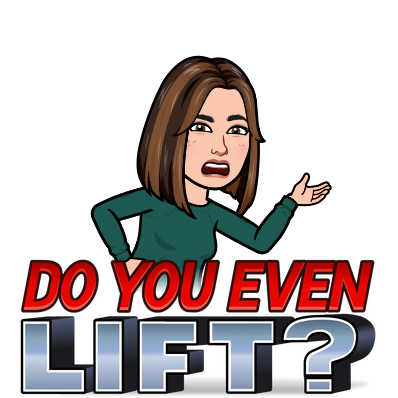
Where I Started vs Where I Am Now:
At the beginning of my journey I wasn’t working out regularly and when I did workout, I only did cardio. I was very nervous to start weight training because I honestly had no idea what I was doing or what I was getting myself into. To be honest, I didn’t even really know what strength training was, I just kept hearing about it on TikTok and wanted to try it out.
Now, I have a pretty good grasp of beginner strength training exercises and the correct form. I learned this through research and the various follow-along type videos I tried throughout the semester. I also have a pretty good idea of how to properly structure strength training workouts to be the most effective. I didn’t achieve all of the goals I set out for at the beginning of this journey but I am still proud of how far I’ve come and everything I’ve learned so far. I am now well set up for achieving those missed steps in the future.
Top Recommendations:
YouTube Channels:
Apps:
Online Subscriptions:
Video Making:
Podcasting:
Final Thoughts…
Being able to do a learning project like this in a university class was an AMAZING experience. I am glad I picked a project that allowed me to stay active because throughout online learning staying active has been a challenge – I just sit at my desk for 8-10 hours a day. I was also surprised how easy it was to learn strength training online, I think part of the convivence has to do with the pandemic which forced some fitness companies to move virtual. Another major contributor to my success in this learning project was my #edtc300 peers and my #edtc400 mentors for their recommendations of online sources! Special shout out to:
Also, a big thank you to everyone for following along with my strength training journey! Everyone’s words of support or encouragement were VERY much appreciated and helped to keep me motivated over the semester!
Once more I just want to give a big thank you to all of #edtc300 students as well as Katia and Amanda for the wonderful semester!!
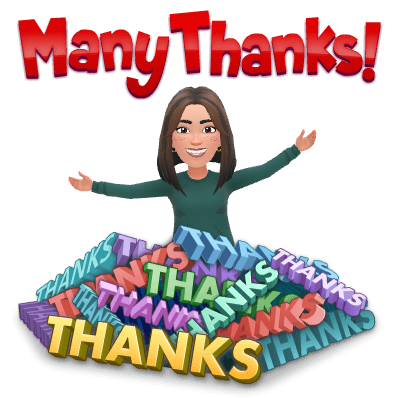
Before #edtc300 I had no clue what a “PLN” even was. However, I quickly learned because a major part of the #edtc300 course is about networked professional learning to establish a personal learning network. The interactions for this took place on three different platforms: course blogs, Twitter, and Slack. The sense of community created in this course made it super easy and enjoyable to interact with peers and try to contribute to their learning in any way that I could.
Course Blog

Throughout the semester I would comment on a minimum of three peer postings a week. Everyone’s learning project’s made it very exciting to check up on everyone’s progress and offer suggestions or advice that might help them out. Below I have compiled some specific examples of these contributions.
Sharing Resources & Ideas:
Reactions, Connections & Encouragement:
Referencing peers in my posts:

I am going to be honest, I was taken by surprise by Twitter. I was especially mind-blown by the concept of #saskedchat but I quickly found myself getting the hang of it! Now Twitter is my quite possibly my favorite way to engage with my PLN! Here are some examples of how I contributed to the learning of other on Twitter:
Suggestions & Answering Questions:
Replies & Interactions:
#saskedchat:
Resources:
Slack
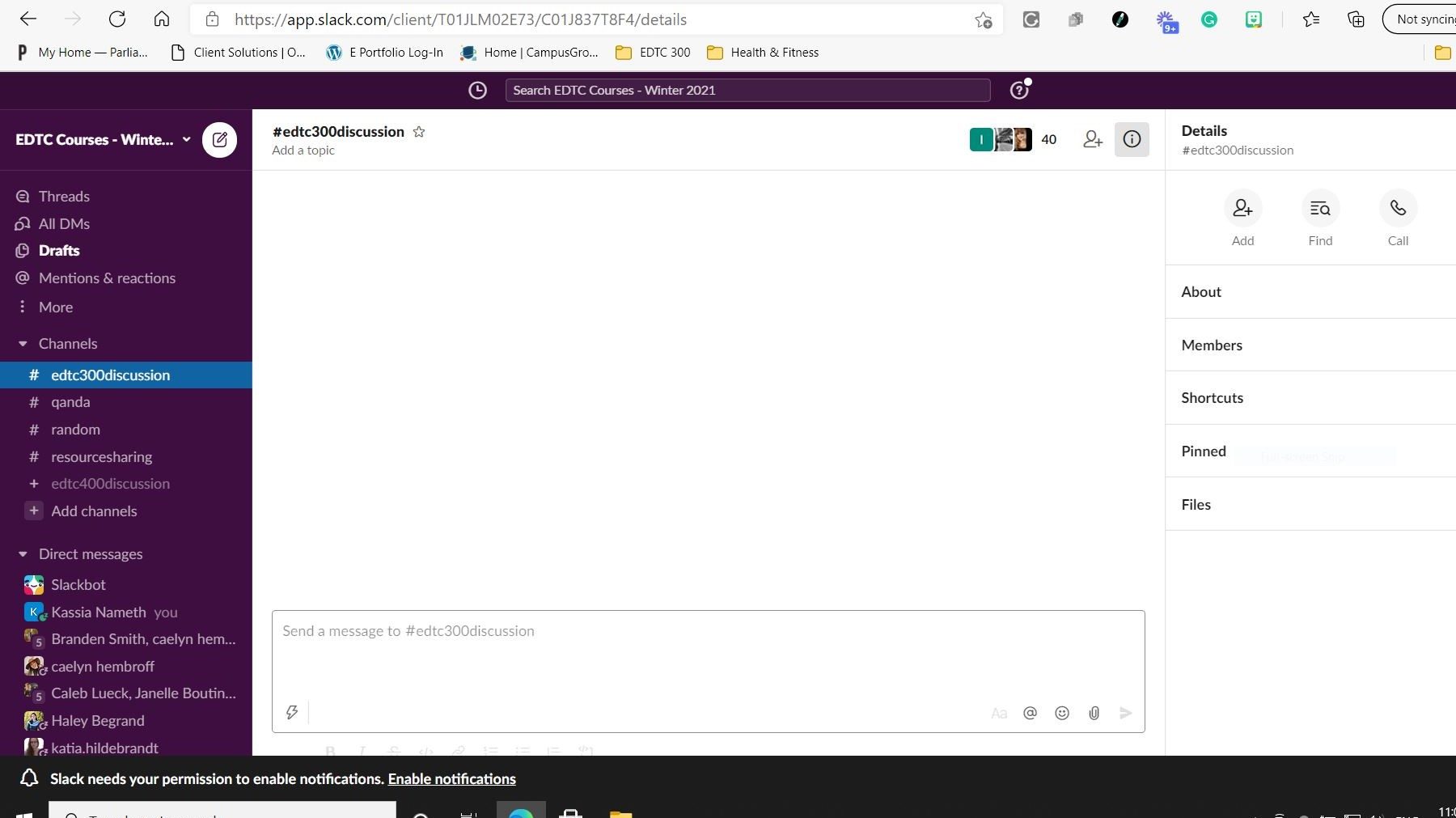
Slack was a new one for me! I had used both course blogs and twitter a little bit before #edtc300 but I had never used Slack! I actually really enjoyed it and it allowed for great peer connection in an online course. Normally, I find myself emailing students and creating group chats anyways so having something like Slack was really nice and created a great space for us to ask and answer questions!
Answering Questions:
Resources:
#edtc300 will forever be #PLNgoalz
I hope I managed to help everyone in the class as much as they helped me! I learned so much from all my peers and all of the resources they shared with me throughout the semester. It felt like we were all on a wild #edtc ride together and we figured things out as a group along the way. I am is sad that I won’t be able to see everyone’s lovely faces every Wednesday night. However, I am excited about everything I learned from everyone (and also everything I was able to share) this semester. Plus, I am excited that we will be able to stay in touch through twitter, so the #edtc300 PLN can live on!!!!
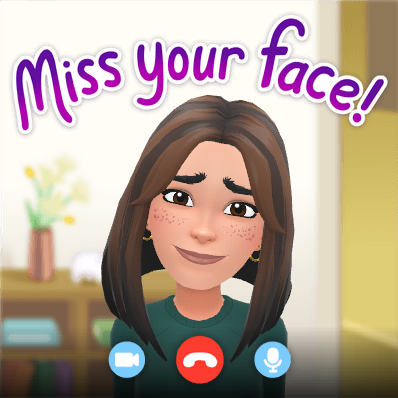
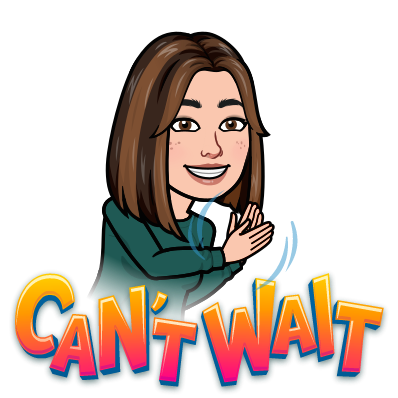

This week in #edtc300 we were tasked with doing an hour of code so of course I made my mom and younger sister do it along with me!
Step One: Pick an Hour of Code Activity
After heading over to https://hourofcode.com/ca/learn we started searching for which activity we wanted to do. My sister quickly picked the “Make a Flappy Bird Game” activity and my mom had quickly selected the “Play, Design & Code Retro Arcade Games” activity. However, I had trouble deciding which one I wanted to do – there were just SO MANY options.
By the time I had finally decided to do the “The Grinch: Saving Christmas with Code” activity, my sister was already done making her flappy bird game (she called it “the 15 minutes of code”) and decided to move on to the “Minecraft Hour of Code” activity. Also in that time my mom had switched from the retro games activity to the flappy bird activity.
Step Two: Actually Do The Selected Activity
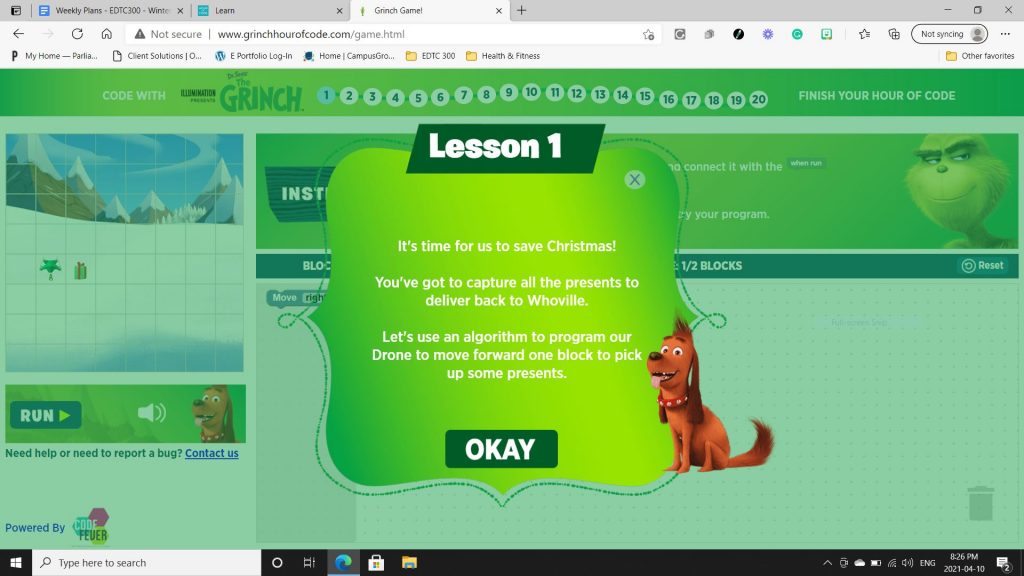
The beginning of this coding activity was smooth sailing (as one would hope considering it is for elementary students)! However, once I got to step eight, things got a little bit complicated – I had the coding right BUT I couldn’t pass the level! You can watch this screen recording of me struggling for proof.
I eventually realized what I was doing wrong in the level, I thought after I picked up Max that the sleigh was stopped (because the nothing on the screen looked like the was motion) so then I would speed up to get going again which left me no time to slow to a stop. Thankfully, I got it figured out and could pass the level to move onto the next steps.
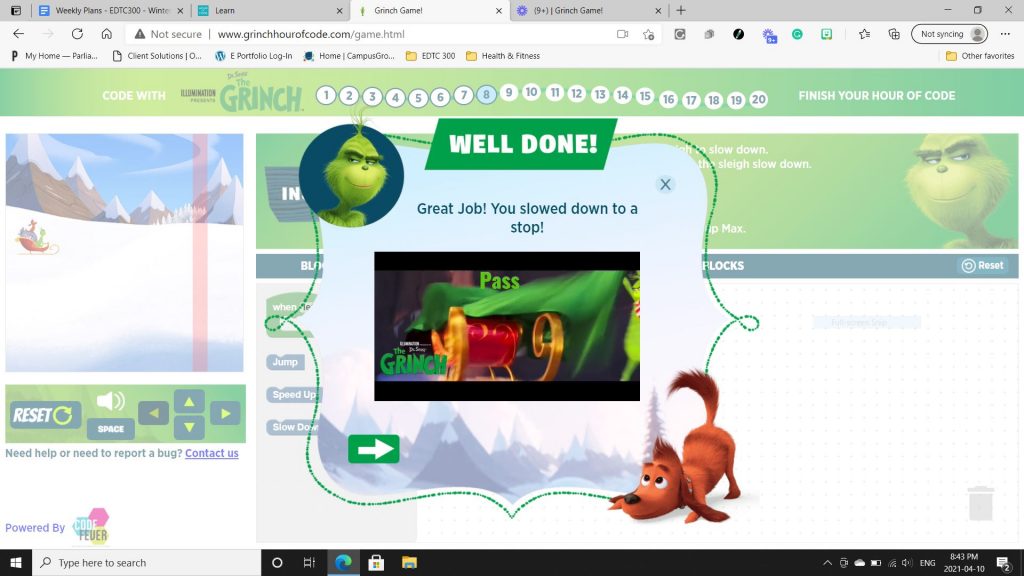
Thankfully, the rest of the steps continued to go smoothly! Here are some screen shots of a little bit of the process:
The very last step was to create your own level of the game. You can watch the screen recording below to see the coding and watch me play my level!

After I was done coding my game my mom, sister, and I all played each other’s games. Here is a screen recording or me playing my mom’s game. I liked that the flappy bird game was easy to share with people.
Step 3: Reflection
I really liked doing the hour of code! I personally enjoyed how it was broken up into easily achievable steps rather than me just having to fend for myself. My mom also enjoyed this aspect of the hour of code. However, my sister on the other hand would have liked experimenting on a software like Scratch better (which I told her she could try instead). My sister had just recently done some coding in school so she was also a couple steps ahead of my mom and I.
Coding in the Classroom
I had never really given much thought about the student benefits of coding before this year. One of the biggest game changers for me was a PD event I attended with SaskCode. It was at that event where I realized all the different curricular connections and possibilities with coding. SaskCode has different robots for many different age groups including:
- Robot Mouse (Grades K-2)
- Ozobot (Grades 3-4)
- Edison (Grades 5-6)
- Microbit (Grades 5-6)
- Tinkercad (Grades 5-9)
- Arduino (Grades 7-12)
On the links to each of the different robots, SaskCode provides examples of possible activities as well as the curricular connections. Just looking through a few of these examples really makes you see just how many ways coding can connect to the curriculum, which really isn’t something I previously realized. It always seems like just a computer science thing.
I thought it was so cool thinking about the possibility of a hands-on experiential learning way for students to learn coding. I always thought it would have to be students sitting at a computer and doing something similar to the hour of code activity I did this week. Overall, I think that coding has importance in the lives of students, especially in the digital age we are in. There are so many different uses for coding and it offers a possible new avenue for students to demonstrate learning because they could code instead of draw or write. So, to simply wrap up my thoughts, I would give coding two thumbs up!
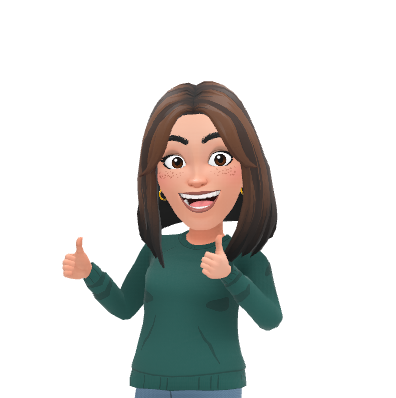

Shockingly enough, I honestly think my first couple of weeks were probably the most beneficial so far because I was actually learning how to do a workout on my own. However, then I sort of shifted directions and started to try out a bunch of different online workouts that didn’t require a lot of thinking and you can just sort of mindlessly follow along. I do think the online workout videos did serve a purpose because they sort of eased be into the idea of strength training and I was also exposed to a lot of different exercises from these videos.
As this project is coming to an end in the next couple of weeks here I am going to shift back towards what I was doing in the very beginning by structuring my own workout (sort of). However, I still don’t really know how to actually structure a workout so I decided to hit YouTube to see if some of my questions could be answered.
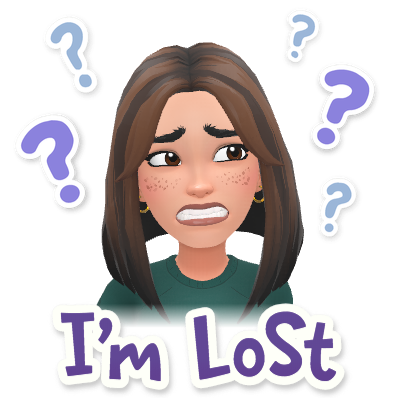
At first I was kind of thinking that I would be able to find a quick and easy explanation and I would just be set and ready to start creating my own workout. I think that was a little naive of me to think. But after a while I found this video by Shelley Darlington that answered a lot of questions I had and even some that I didn’t know I needed answered.
Workout Split:
One of the first things discussed was how to split your workout (which I now realize I probably should have been doing this whole time). Shelley suggested that beginners do a Lower/Upper body split 3-4 times a week. She also gave some advice when creating a workout plan:
- Consistency + skill + structure = results
- Keep it simple
Different Workouts:
The next thing discussed was different workouts you could do for the different days in the split.
Lower body: squats, lunges (static lunge), deadlift (stiff leg deadlift), Leg press, Bulgarian split squat, hip thrust, seated hamstring curl
Upper body: Lat pull down, seated low row, chin ups (assisted), dumbbell row, dumbbell shoulder press, dumbbell side raise, pushups, bench dips, hammer/bicep curls, tricep rope pull down,
Core: (not necessary) but you can do a three exercise circuit on your arm days (2 days a week) if you really want. 3 rounds of 15 reps
Workout structure:
Next, the video went over how to structure the workout it’s self. Shelly suggested:
- 4 or 5 exercises
- 3-4 sets per exercise
- 10-15 reps
- rest 60-90 seconds between sets
- Total workout should be 45 min to an hour with warmup/cooldown
Overall structure:
Next the video went over the overall structure of your workout, which is honestly something I haven’t thought about before. But I learned you should be doing 4-6 weeks blocks of doing the same workouts. This means that once you have your weekly plan, you have to do it for a minimum of 4 weeks in order to see results.
A final word of wisdom from Shelly’s video was “learn to love the mastery of lifting weights”
This is going to be harder than I thought…
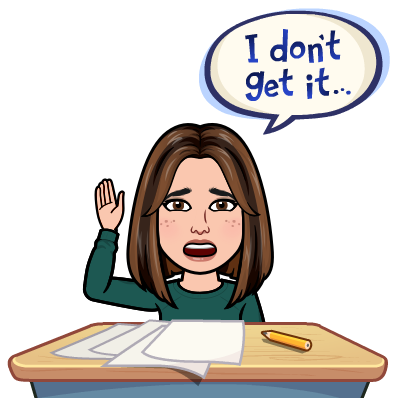
There is way more things to consider than I originally thought there would be. So, I decided to try another resource that my #edtc400 mentor, Caleb Lueck, recommended to see if it would clear things up.
Trying out Jetfit
After Caleb recommended Jetfit I googled to to see what it was all about. Apparently it is the #1 popular workout tracking platform, so I was very excited to try it out!
When you first download the app you have to make an account and then it asks you some questions about yourself so it can recommend premade workout plans to you (but of course that is not why I got the app, I got it to make my own workout plan)
Once you get through all that beginning stuff then you can start to make your workout plan. I used the information from Shelley Darlington‘s YouTube video to guide the days, sets, rests, and the exercises that I picked.
Overall, the Jetfit app made the whole process seem a lot more organized and it is laid it is a visually appealing and easy to use way. I also like that there is videos and descriptions that go along with each exercise so that I can make sure I can get the form correct.
Also, just a funny story about trying to record this week’s workout. First I forgot to press start when I got my old phone set up to record (because I needed my phone to see the app). Then, after the first 2 and a half exercises my phone decided to run out of space. So, I had to start recording on my laptop webcam of all things. Since, some of the footage was on my laptop and some on my phone I wasn’t sure how on earth I was going to put a video together, especially since the files are both large. I ended up having to edit the videos on my phone first in order to get them into a smaller file and then emailing it to me so I could use the windows video editor. I had never used the video editor before but it was surprisingly easy to use! Here is little peak of what the video editor looks like.

The world of news today is far more complex and accessible than it use to be and with that, the world of fake news has also become more complex and accessible. When I was in school I don’t remember learning much about how navigate through news and fake news. I do remember in grade 8 there was some sort of module about internet safety and that was about it. The few things I remember from that module was to look to see if a website says http or https and also to see if there are any major typos or grammatical errors on the site. I am not going to lie, I thought this had me well equipped to figure out which things online are real and fake. I realized how wrong I was during my last EDTC class where we took a quiz to “Spot The Troll” on various social media accounts and it was WAY harder than I thought it was going to be. This is when I realized that myself and students today need to learn more effective skills to spot not only fake news but also these fake social media accounts.
The Complexity of Fake News

I always thought fake news was sort of just one intentional thing that was fairly easy to spot and point out. However, I learned that I am very wrong and there are many different kinds of fake news or misinformation and disinformation. In the article, “Fake News. It’s Complicated,” Wardle breaks down the complexities of fake news. Wardle describes seven types of misinformation and disinformation present that can be present in fake news:
- Satire/Parody (no intended harm)
- False Connection
- Misleading Content
- False Context
- Imposter Content
- Manipulated Content
- Fabricated Content (designed to deceive and harm)
No matter the type of fake news, it usually manages to go undetected and be shared around the internet without people realizing it is fake news. In many cases, fake news is designed to evoke and emotional response because as Wardle described, “When humans are angry and fearful, their critical thinking skills diminish.” This concept was well explained in the educational comic “You’re not Going To Believe What I’m About To Tell You.” The comic describes the psychological “backfire effect” which describes how our brains are “biologically wired to threatening information the same way we’d react to getting attacked by a predator” especially when our core beliefs are being challenged. Being aware of this effect can help limit the spread of fake news. However, as the comic explained, “I don’t have a way to change the behavior of 7.5 billion people.” Another factor comes into play as well, because to my surprise, it isn’t just everyday folk that are spreading this fake news around.
“Some of it is being shared unwittingly by people on social media, clicking retweet without checking. Some of it is being amplified by journalists who are now under more pressure than ever to try and make sense and accurately report information emerging on the social web in real time. Some of it is being pushed out by loosely connected groups who are deliberately attempting to influence public opinion, and some of it is being disseminated as part of sophisticated disinformation campaigns, through bot networks and troll factories.
Claire Wardle, 2017
This once again supports the need for students to have a multifaceted approach to decipher news from fake news.
So, how do we teach students the skills to understand and identify fake news?
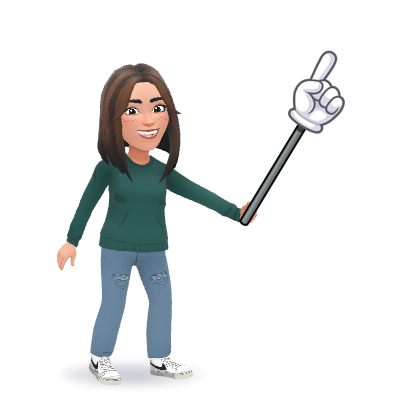
First off, Couros and Hildebrandt put together a fact sheet called “How do we teach students to identify fake news?” that suggests how help students with this new wave of fake news. I personally think one of the biggest strategies is “Prioritize helping students develop investigative techniques.” Especially since photoshop and editing for both picture and videos are so advanced today it is easy to turn important people or events into something that looks real but is fake. I agree with Couros and Hildebrandt that teaching students to make a habit of using reverse image search on google will be very beneficial.
Another strategy I think deserves an honorable mention is “Teach students to identify bias.” Almost every news source is writing to a specific audience which is something I was always aware of but never knew how to actually figure out which one leans which way. In class, Katia showed us a chart that I agree would be very beneficial for students to know and understand.

Thinking more about the future
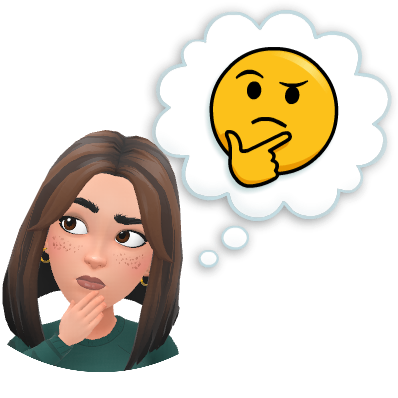
I feel like the pandemic has just allowed fake news to reach an all time high. So, many of my older family member are always sharing fake news on Facebook because they never learned any skills to even know which articles are fake and which aren’t. I am lucky enough to have gotten a little bit of education on fake news so I am able to tell (at least the majority of the time). When, I think back to my own education about fake news and history of fake news in general and I am very shocked at how quickly things changed and how difficult it is to avoid fake news now. I can’t help but wonder how much more it will change before I even graduate and then again throughout my teacher career. Part of me wants to believe that the school system is educating students to become adults that are capable to identifying fake news which will probably decrease the fake new problem. But I also can’t help but question how much worse it is going to get in the meantime. Will it ever get to a point where it is nearly impossible to identify fake news?
Integrating Digital Literacy into Elementary Classrooms
The National Council of Teachers of English (NCTE) released a framework of 21st Century Literacies that are necessary for 21st century teaching and learning. The goals of this framework include:
- Develop proficiency and fluency with the tools of technology;
- Build intentional cross-cultural connections and relationships with others so to pose and solve problems collaboratively and strengthen independent thought;
- Design and share information for global communities to meet a variety of purposes;
- Manage, analyze, and synthesize multiple streams of simultaneous information;
- Create, critique, analyze, and evaluate multimedia texts;
- Attend to the ethical responsibilities required by these complex environments.
When it comes to goals #1, #3, and #6 the first thoughts that come to mind are teaching students about how to be digital citizens. You can read my thoughts on this in one of my previous blog posts here. However, I think goals #2, #4, and #5 align really well with the topic of fake news and how to address digital literacy in the classroom. I personally think that the topic of digital literacy aligns very well with the English, health, and social studies curriculum. So, searched through the grade 3 curriculum and pulled some outcomes and indicators that could connect with the NCTE framework and digital literacy/fake news.
USC3.1 Determine the role of a variety of healthy foods and physical activity on the health and development of the mind, body, and immune system.
- d. Describe what makes and keeps the body, mind, and immune system healthy.
- e. Begin to distinguish between fact, opinions, misconceptions, and preferences regarding healthy foods and physical activity.
USC3.3 Determine how the misuse of helpful and the
use of harmful substances (including tobacco) affect the health of self and others.
- b. Reflect on what is believed/known to be healthy and/or unhealthy regarding substances.
- c. Examine common misconceptions (e.g., alcohol is not a drug) regarding substance use and abuse.
DM3.1 Demonstrate the importance of investigating information for making
informed decisions related to healthy foods and physical activity, one’s “inner self”, helpful and harmful substances, healthy family and home, safety at home, and
impact of violence.
- a. Critique decisions made by someone (e.g., community situation, character in a story) who did not investigate the information/facts before making a decision, and compare it to those made by people who did.
- b. Determine the kinds of information to gather and investigate for making healthy decisions.
- c. Examine sources of information/misinformation in the community
PA 3.2 Demonstrate awareness that divergent viewpoints may lead to conflict as part of group interactions, and assess various means of conflict resolution.
- a. Inventory situations in which divergent viewpoints exist within the classroom and school.
- b. Solicit the opinion of several persons about a current issue of concern in the school.
- c. Categorize viewpoints as likely or unlikely to create conflict and explain why.
- d. Construct a list of reasons why groups and communities may experience conflict, and identify ways in which conflict is resolved and harmony is restored.

As you have most likely gathered from the title of this week’s blog post, I managed to end up fitness TikTok this week. Like seriosuly every single video was ethier about working out or eating healthy and boy did that take the joy out of scrolling through my fyp. However, there is an upside because it gave me all sorts of virtual workout ideas to potentially try!
I ended up deciding to check out the suggestion from the second TikTok that is linked above for Caroline Girvan YouTube Channel.
Except I somehow accidentally ended up doing the beginner one which apparently does not include weights (even though the whole reason I picked this channel is because the TikTok said it was a dumbbell workout and I still picked the wrong one somehow). Throughout the whole first half of the workout I was just waiting for her to say “grab your weights” but it never happened and I didn’t realize my mistake until after the fact.
Okay I had to talk very fast in this video so here is a list of the exercises (45 seconds on and 15 seconds off):
- Wall sit
- Squat walk
- Static lunge
- Close squat
- Lateral squat walk
- Curtsey lunge
- Squat with pulse
- Sumo squats
- Lunge hold
- Bulgarian lunge
- Single leg chair squat
- Single leg chair bridge
- X-over
- Donkey kick
- Single leg raise
- Hamstring dead stop
- Hamstring march
- Kneel to squat
- Alternating rear lunge
- Sumo pulses
Unfortunately this was the only workout I did this week. The end of the semester grind is in FULL swing and I had trouble finding time to get a workout in because I’ve been spending every second doing class, readings, videos, term papers, and projects. I was hoping this week I would be able to start researching how to structure my own workout and then try and do the workout with a friend over zoom or something to sort of teach them what I’ve been learning but I just didn’t have the time. So, it looks like that is what I will be doing for next weeks part of the project! If you have any tips or websites you recommend for learning how to structure/split workouts I will graciously take them because I don’t really know where to begin!
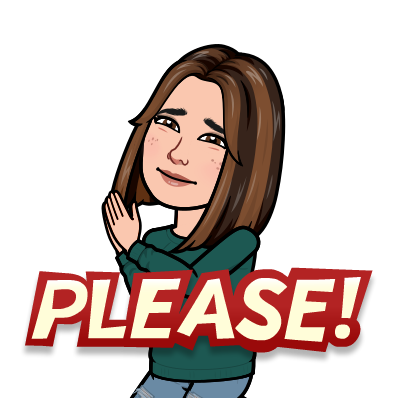

This week our #edtc300 class was tasked with finding a partner and then we had to cyber sleuth each other so we can see what our digital identities look like. I feel like “cyber sleuthing” is a regular activity for most people these days. I have a couple friends that are my go-to people for finding information online about anyone. So, it will be interesting to be on the other end of things this time! My partner for this activity is Caelyn Hembroff and I will take you through my process from my cyber sleuth on Caelyn!
Started off with a little Google search…
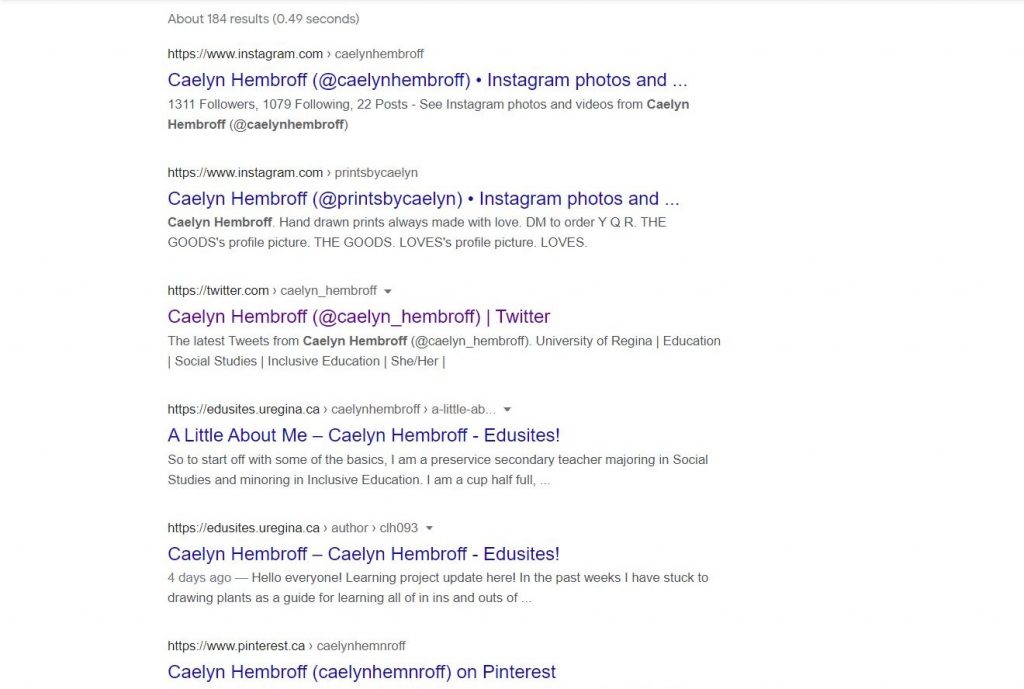
After googling Caelyn’s name, the first thing to come up was her two Instagram accounts, one was a personal one and the other a business account. Both of the are public accounts but they both feature very appropriate pictures that you’d expect to see on someone’s Instagram. The next thing to come up was Caelyn’s twitter account, which also had all good things and was mainly focused on education related materials. After that in the search results is her e-portfolio, which again is full of all positive things.
Next up in the search results was two Pinterest accounts, one that I am guessing is an old one because of all the saved “lifehacks” (which is what my old Pinterest also looked like). And the other account I would say is a newer one because it gives off much more adult vibes with boards for tattoo, home decor, and meal ideas. Again, both are contain very appropriate and preview typical pins. The next thing to come up was Caelyn’s VSCO account. VSCO is a public social media platform where people tend to share very trendy pictures but it also does have a reputation for people sharing more scandalous pictures. However, Caelyn’s VSCO is very appropriate and it honestly made me miss travelling.
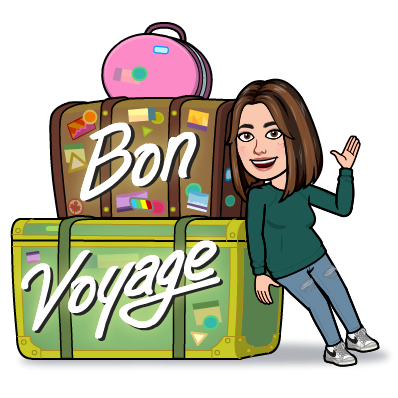
On the second page of google, the first result is a link to @localbarrefitness on Instagram because Caelyn follows them. Next up, was a link to Caelyn’s YouTube channel but there weren’t any public videos on the channel. Then, the rest of the second page and the third page of results are just more Pinterest links.
Lastly, I went to google images. Here, I found an old twitter account of Caelyn’s from 2013. There was only a couple pictures on it (that were very representative of the trends at the time) and they were all very appropriate. I also found some old “Caelyn Hembroff Photography” pictures that were all of nature.
What else can I find…
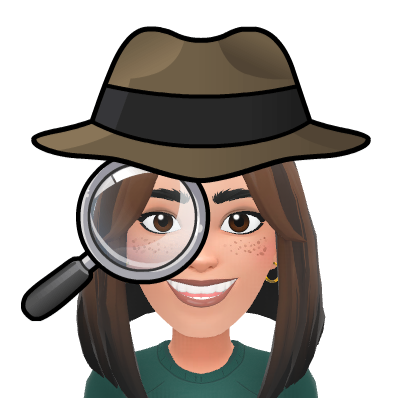
I noticed that one major social media was missing from the google search results and that is Facebook! So, of course I got out my phone and search her name on Facebook. Sure enough she has a Facebook account, but it is very private, the only post I could see was a post from when she updated her cover photo. For her info on Facebook, I could see where she lived, her gender, and also the 99 business pages and one TV show that she has liked.
BUT when you search Caelyn’s name on Facebook, public posts from who I am guessing is her dad come up and you can see pictures from when she got her license, went to the hospital on Christmas, got accepting into university, graduated, and went fishing. From her dad’s profile I found the names of Caelyn’s siblings including her sister’s facebook. Then, from her sister’s facebook, I found her mom and Grandma’s name and also Caelyn’s birthday and age.
Overall impressions of Caelyn’s Digital Footprint
Based off Caelyn’s digital footprint I would say she is a very creative, kind, and caring person. I would say that her interests are boating, camping, plants, travelling, inclusive education, and spending time with friends and family. Based off her digital footprint, I would 100% trust, hire, and want to be her friend! I wouldn’t say that Caelyn is necessarily an oversharer or an undersharer. I feel like she is somewhere in the middle but a little closer to the undersharer side (especially on twitter). So, that being said my advice to Caelyn would be to work on maybe posting a little more on twitter. I think it would be nice if your twitter got to see a little more of you personal side like some of your likes and interests!
Digital Identities on Social Media Today

“Different sites, different audiences, different purposes.” she says. “Very simple.”
NICOLE LEE, 2016
Lee’s article Having Multiple Online Identities Is More Normal Than You Think, makes the fact that each social media platform serves a different purpose seem like a ground breaking discovery. However, to me this seems like common knowledge. After all, this idea was created on purpose by each different social media companies to attract new audiences and convince users that they need to be on their app. So, I wouldn’t say this idea is really that strange at all because social media is intentionally marketed to be like this, if it wasn’t like this there wouldn’t be multiple social media platforms.
“Instagram is where everything appears to be perfect and highly filtered, whereas my Snapchat is raw and more visceral”
Nicole Lee, 2016
This quote reminded me of the “how social media looks to me” TikTok trend from a while ago. For this trend, people found videos that they thought matched the aesthetic or vibe that each social media gave off.
“I also think having multiple social accounts takes the pressure off having a perfect feed of social moments.”
Nicole Lee, 2016
I would agree with Lee that the use of multiple accounts on each social media platform is a relatively recent phenomenon. I also feel like it is becoming increasingly more common. In fact, it is so common today that in my friend group all of us that have multiple Instagram accounts or multiple private stories on snapchat. It also seems like it is more uncommon to not have this. I also know that kids around 13 and 14 years old have even taken this idea to TikTok and now they have multiple TikTok accounts.
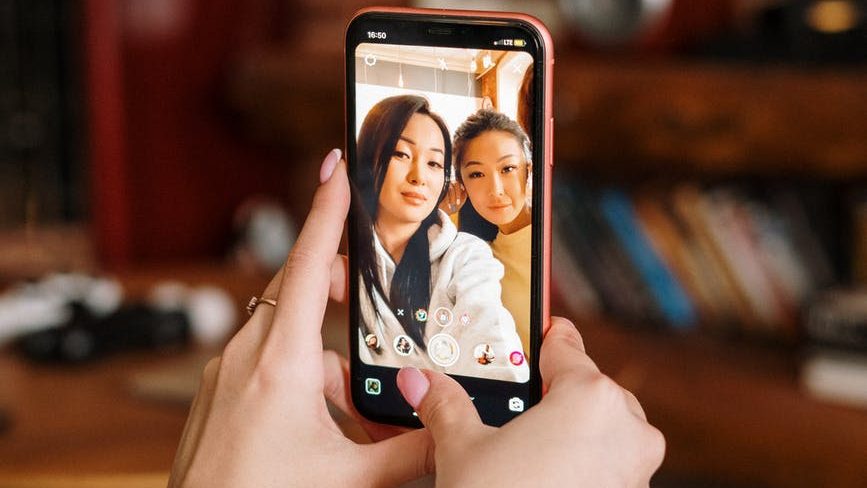
I feel like need/want of multiple accounts stems from the fact that my generation was raised very aware of the potential consequences social media can have. So, we’ve tried to figure out a way to have certain social media accounts attached to our name that put out the picture perfect life in a professional way for the world to see. Then, we have other accounts that offer a more candid look into our lives that is only for our close friends to see. So, I can totally see how the Split Image article comes into play, but it honestly feels like we were almost taught to create this split image life. It is like the unwritten rule of social media is that you post the highlights of your life. That is another bonus of having multiple accounts on each social media platform is that it takes the pressure off of posting because you don’t have to post only picture perfect things.
I am curious to see how many #edtc300 classmates have multiple social media accounts for the same platform? If you are comfortable sharing more, let me know why in the comments.

First Workout Of The Week

For my first workout this week I decided to try Laura Fiddler’s recommendation of Sydney Cummings YouTube channel. When I was looking through the channel there were so many videos that I thought I would like and that would apply to my learning project. I ended up doing the 50 Minute Total Body Strength Workout, which I didn’t realize at the time was part of some program. Thankfully, I don’t really think it mattered too much that I just in at day 19 of the challenge.
I actually really liked this workout! I don’t think I have followed a longer workout video yet in this project, so it was a nice change (I usually do 30 minute videos and this one was 50 minutes). I generally lean towards the shorter videos because I always seem to be in a time crunch but I definitely see myself doing some more longer videos in the future (if I have enough time that is).
Workout #2
For my second workout of the week I decided to finally try out the fitness channel that the university made at the start of winter semester. The channel is called URFIT On Demand and you have to log in with your university sign-in to be able to access the videos.
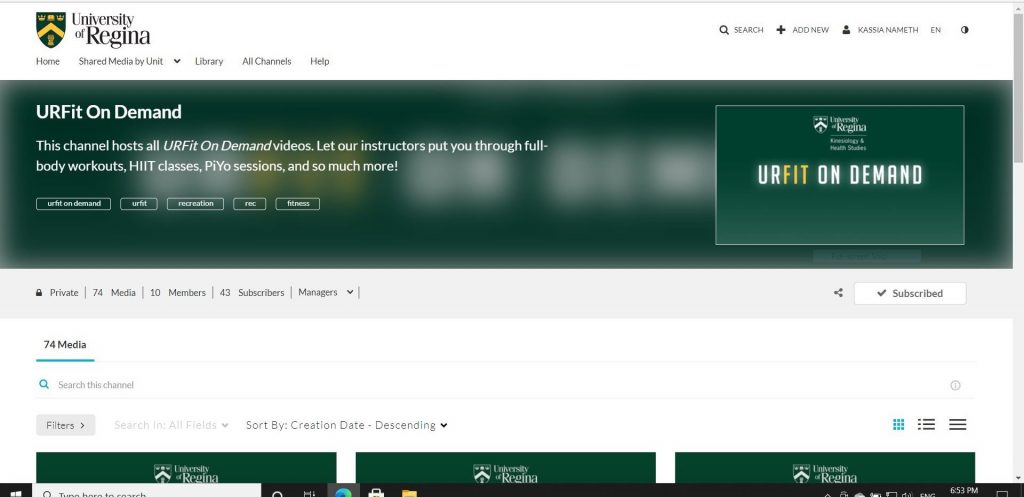
This is what it should look like once you are logged in and then you can pick from a bunch of different types of workouts such a yoga, boot camps, body sculpts, zumba, and even pound classes (if you haven’t heard of pound classes before you should check them out they are pretty fun)! I previewed a couple different body sculpt and boot camp videos on the channel trying to find one that didn’t look too boring or repetitive and I ended up finding one titled “Build It Up Bootcamp: Feb. 11, 2021” that looked promising!

Once again this was a longer video than I had been doing previously. I think this one was just about 50 minutes. However, same thing as the last video I actually quiet enjoyed the longer full body type video rather than a couple videos targeting different areas. I also liked that there was actually real people that were doing this boot camp when the video was being recorded so then it felt more like I was also there. It also allowed for the instructor was able to better explain correct positioning and sometimes to people that were working out asked the instructor questions that I was also wondering which you normally wouldn’t be able to get an answered to if there weren’t people working out when it was happening live. I am curious to see if any other university students have tried out any of the URFIT classes?
What are my next steps…

This semester has been FLYING by so fast! I can’t even believe how close we are to the end of the semester. This has me reflecting back to my initial plan about this learning project and how I am nowhere near where I thought I would be in my strength training journey. Technically, I would still be in the first stage of my plan which was starting at-home workouts. But, when I went to my apartment gym to try and follow a video workout I found it a lot harder because a) there wasn’t really a good option to set myself up and be able to see the video on my phone and b) it was more complicated in terms of equipment use (waiting for other people using equipment or you are in someone’s way). So, I figured that it would be best to leave the gym component of my project until I had a better grasp of different strength training workouts and how to properly structure a strength training workout. But then, Regina’s covid cases just been getting worse and worse so I haven’t been overly eager to try and go to an actual gym. So, I have just been continuing with the at-home workouts, which I don’t think is a bad thing. However, I am starting to feel a little stuck where I am in this project now. I have been spending some time thinking about how I can switch things up or take my learning to the next level in this project.
As of right now I am thinking that I am going to continue with the at-home workouts but also spend some time learning how to structure my own workouts. Then, one of my friends was saying how she wanted me to make a workout for her. So, I think that could be a cool direction to go as well (once I learn how to structure a workout) and I could sort of instruct a workout for her over zoom. That is kind of what I am thinking the rest of my learning project will look like but I am open to any interesting suggestions about what you think I could include into the end of this project!
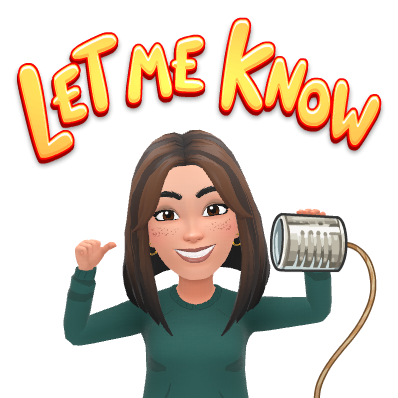
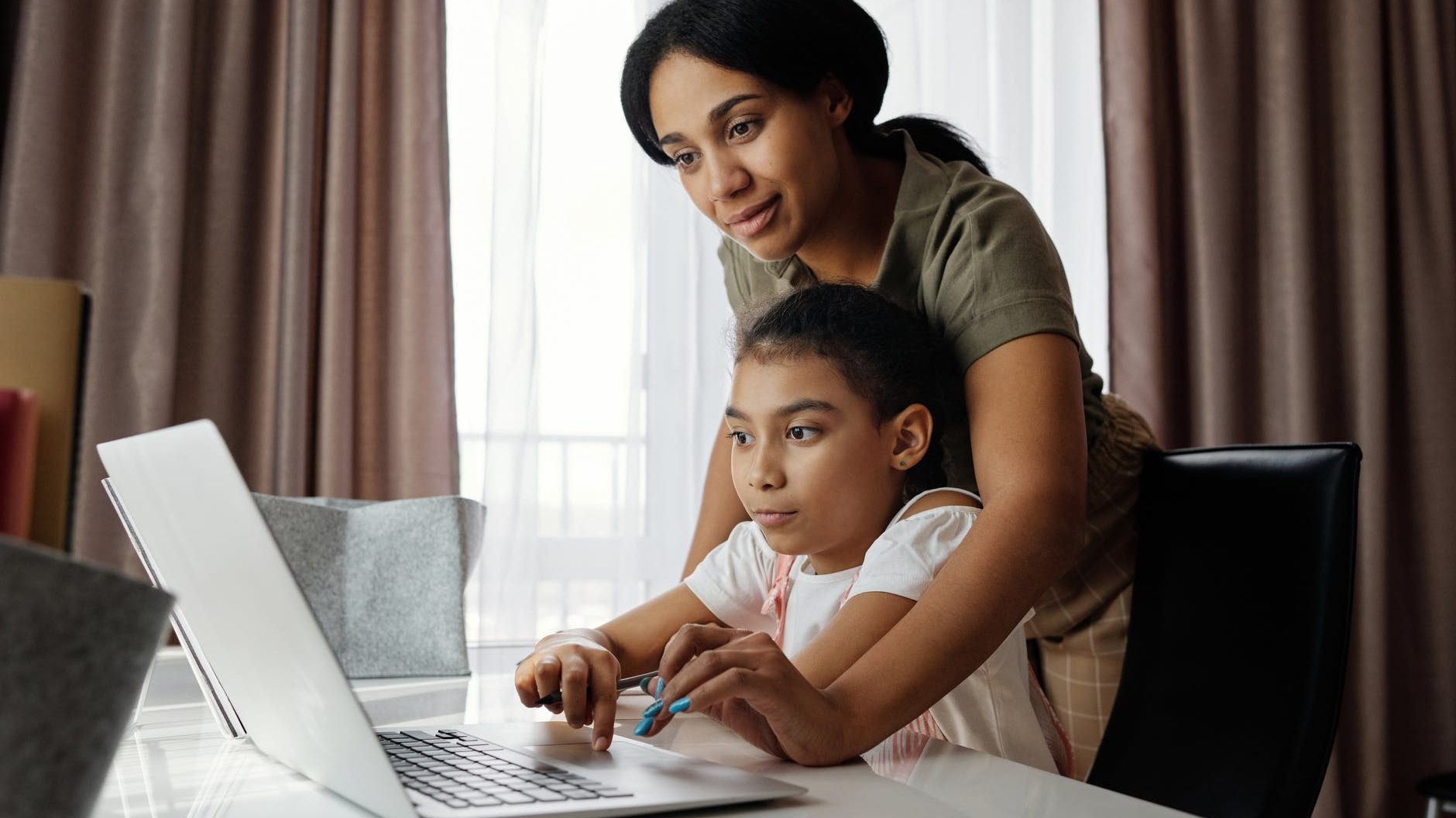
“Should we teach our children as though they have two lives, or one?”
Jason Ohler
In the article Character Education for the Digital Age, Ohler brings up this debate of forcing children to either live two lives by creating a divide between school and personal life by keeping schools “digitally unplugged” OR live one life by integrating the digital world into schools and informing students how to be digital citizens. As educators, we need to move away from the “two lives” approach and embrace the idea of teaching students to live one life. I think one of the biggest reasons why this needs to happen is because you can never really be “offline.” Jurgenson addresses this “digital dualism” in The IRL Fetish.
“It fails to capture the plain fact that our lived reality is the result of the constant interpenetration of the online and offline. That is, we live in an augmented reality that exists at the intersection of materiality and information, physicality and digitality, bodies and technology, atoms and bits, the off and the online.”
Nathan Jurgenson
Another reason I think the “one life” approach is necessary for the future is that technology just keeps getting more and more advanced and more and more children and adults are using technology more frequently. Furthermore, if teachers are going to be incorporating educational technologies into the classroom, children need to know how to properly use and interact with these technologies. You can’t just start throwing technology at them and hope for the best. Ohler addresses this in the article Character Education for the Digital Age.
“School is an excellent place to help kids become capable digital citizens who use technology not only effectively and creatively, but also responsibly and wisely. But we can only do that if we help them live one life, not two.”
JASON OHLER
Ribble has acknowledged nine elements of digital citizenship that I think will help make the “one life” approach become a reality. Furthermore, each of these nine elements contains three guiding principles of safety, savvy, and social. The nine elements are:
- Digital Access
- Digital Commerce
- Digital Communication and Collaboration
- Digital Etiquette
- Digital Fluency
- Digital Health and Welfare
- Digital Law
- Digital Rights and Responsibility
- Digital Security and Privacy
How do I see myself integrating digital citizenship in my future classroom?
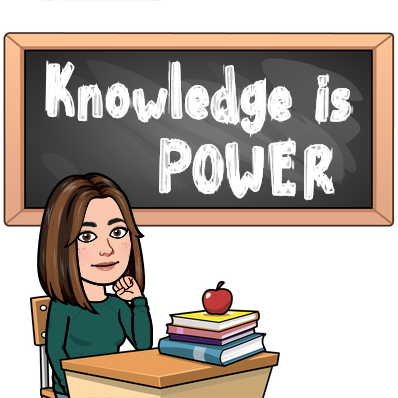
As previously discusses I think that I will include the “one life” way of thinking about digital citizenship into my future classroom.
One method I think we need to move away from as educators is the “scare tactic” method. It is far outdated and generally highly ineffective. I really liked what our EDTC 300 TA Amana Brace said during one of our lectures.
“I am a big believer that edtech, digital citizenship, digital footprints and all those things shouldn’t be scary things. So, when we’re teaching this to kids. We should not be using the fear tactics, we should be encouraging them to use it out of leadership and to use it as citizenship.”
Amanda Brace
I really want to bring this mindset into my future classroom because when I was in school, teachers used the fear tactics and looking back now it really isn’t the best option out there. The shift towards this new outlook of digital citizenship and empowerment is reflected in those nine elements I discussed earlier and even in Saskatchewan specific documents such as the Digital Citizenship in Saskatchewan Schools – Policy Planning Guide and the Be Kind Online Digital Citizenship Continuum.
Another aspect of digital citizenship I want to make a conscious effort to make room for in my future classroom is integrating student’s voices and ideas to make sure we cover what matters most to that particular group of students. Ohler talked about this in his article Character Education for the Digital Age.
“Schools should explicitly invite students to participate in such efforts for three reasons: students know far more about opportunities and perils in cyberspace than most adults do; their involvement gives adults and youth a chance to talk about a world in which the two groups rarely intersect; and, like adults, students will be more committed to living up to values they develop themselves than to values imposed on them by others.”
Jason Ohler
Where do I see myself integrating digital citizenship in my future classroom?

In terms of grade levels, I think the nine principles have a place in every grade level (this idea is broken out very nicely in the Be Kind Online Digital Citizenship Continuum). More and more children have access to technology and the internet at younger and younger ages. So, it is becoming increasingly important that students are learning how to be safe and educated digital citizens at a young age and then we can continue to develop those skills and introduce new ones as they get older. Also, as educators continue to integrate technology in the classroom it is important that we are helping students understand how to properly engage with the technology.
As for subjects that connect with Ribble’s nine elements of digital citizenship, the first subject to come to my mind was health. While reading and looking through the various articles and resources assigned this week I noticed every document touched on the connection between children’s health and technology. So, I decided to go through the health curriculum and pull out various outcomes and indicators that I think could/should include some of the nine elements of digital citizenship.
USC2.1 Demonstrate a basic understanding of how thoughts, feelings, and actions influence health and well-being. [Digital Health & Wellbeing]
- b. Examine daily habits/routines that are healthy/unhealthy (e.g., eating breakfast/skipping breakfast, recycling/littering).
- f. Discuss the basic “cause-effect” relationship among thoughts, feelings, and actions (e.g., If I think I am smart, I will feel “content/confident” and I will try to learn. If I think I am “dumb”, I will feel sad/frustrated and I may not participate in class.).
USC2.4 Examine social and personal meanings of “respect” and establish ways to show respect for self, persons, living things, possessions, and the environment. [Digital Etiquette, Digital Communication]
- a. Develop a common understanding and use of respectful language to talk about “respect” (e.g., tone of voice, manners, behaviours).
- c. Determine how to show respect for own and other’s material possessions (e.g., ask before borrowing, put away when done using)
USC2.5 Recognize potential safety risks in community “play areas” and determine
safe practices/behaviours to identify, assess, and reduce the risks. [Digital Safety & Security]
- b. Examine expected behaviours and general safety rules in community “play areas” (e.g., parks, playground, schoolyard).
- c. Inventory personal habits with respect to safety in community play areas
- f. Discuss how safety rules/guidelines are established to reduce risks.
- g. Investigate ways to identify, assess, and reduce the risk of potentially dangerous and/or possible unsupervised situations in community “play areas”.
- i. Share the importance of practising safe behaviours in community “play areas” (i.e., one’s safety depends on the safety behaviours of others) and the possible consequences of using/not using safety knowledge and skills.
USC5.4 Analyze the connections between personal identity and personal well-being, and establish strategies to develop and support a positive self-image. [Digital Health & Wellness]
- a. Investigate knowledge and information about self-image.
- b. Discuss criteria that can be used to determine if a health source is reliable.
- c. Describe the qualities that are important in a person, regardless of their gender, culture, appearance, sexual orientation, abilities, and/ or language.
- g. Reflect on self-image as “the way you see yourself as a result of what you believe about your appearance, abilities, and character”.
- h. Discuss the influence of self and others (e.g., family expectations, family values and beliefs, culture, religion) on one’s self-image.
- i. Explore and describe what one can think, say, and do to develop and/or support a positive self-image in both self and others (e.g., recognize and refrain from derogatory comments related to any aspect of one’s self-image, challenge stereotypes, bias, and discrimination that are based on appearance and/or self-image).
USC5.6 Assess peer influence and demonstrate a readiness to prevent and/or avoid potentially dangerous situations involving peer pressure (including lying, substance use, and bullying). [Digitial Safety & Security, Digital Health & Wellness]
- a. Discuss why peers pressure each other.
- b. Ask questions and seek answers for deeper understanding (Why is peer pressure often more prevalent during adolescence than during any other time in one’s life? How and why does peer pressure change as one gets older? Why can peer pressure be so powerful? How do my thoughts, feelings, and actions influence my peers?)
- c. Examine the different levels of pressure (i.e., internal, indirect, direct).
USC5.7 Assess the importance of self-regulation and taking responsibility for one’s actions. [Digital Health & Wellness, Digital Rights & Responsibilities]
- g. Compare scenarios where individuals do/do not self-regulate and the impact on self and others.
- h. Examine the influences on self-regulation, including that which comes from adults in the environment.
- i. Determine that all choices/decisions have consequences.
- j. Analyze the rights that go along with personal responsibilities
#saskedchat advice on the matter
Questions for my readers:
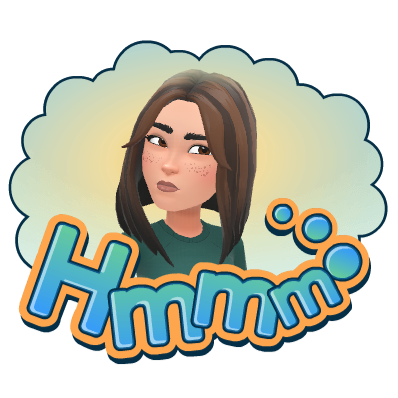
What resources have you found the most helpful for integrating digital citizenship into the classroom?
Do you have any experience integrating digital citizenship into the classroom? If so do you have anything tips or things that went well that you are willing to share?
Secondly, did you have any specific training for this? In the article Character Education for the Digital Age, Ohler says “The board provides teachers with training they need to effectively address issues of digital citizenship. It empowers teachers, librarians, and school counselors to become ethical coaches to help students navigate the many ethically charged issues associated with a digital lifestyle” and I am curious to know if any training like this actually ever happens?
